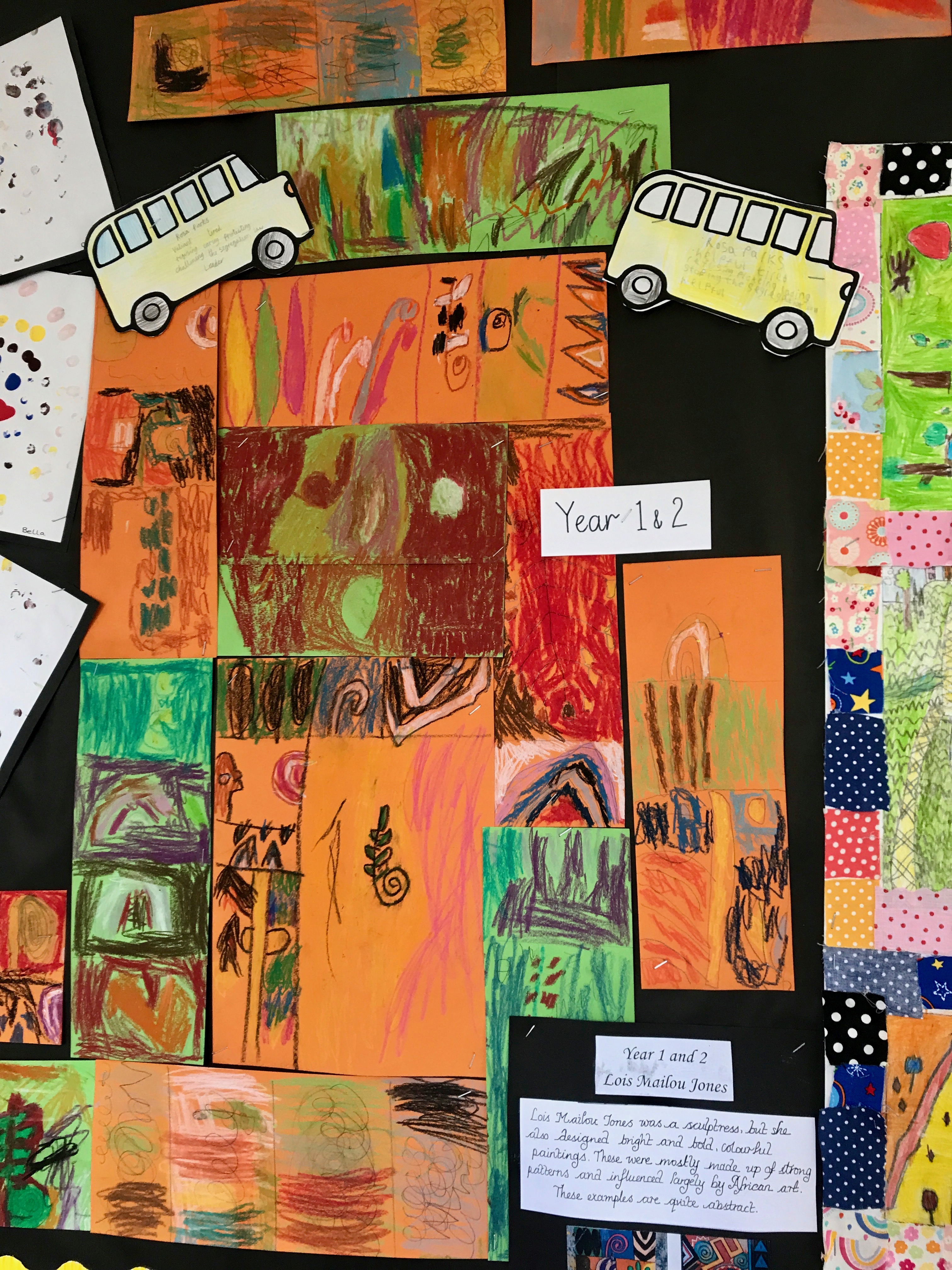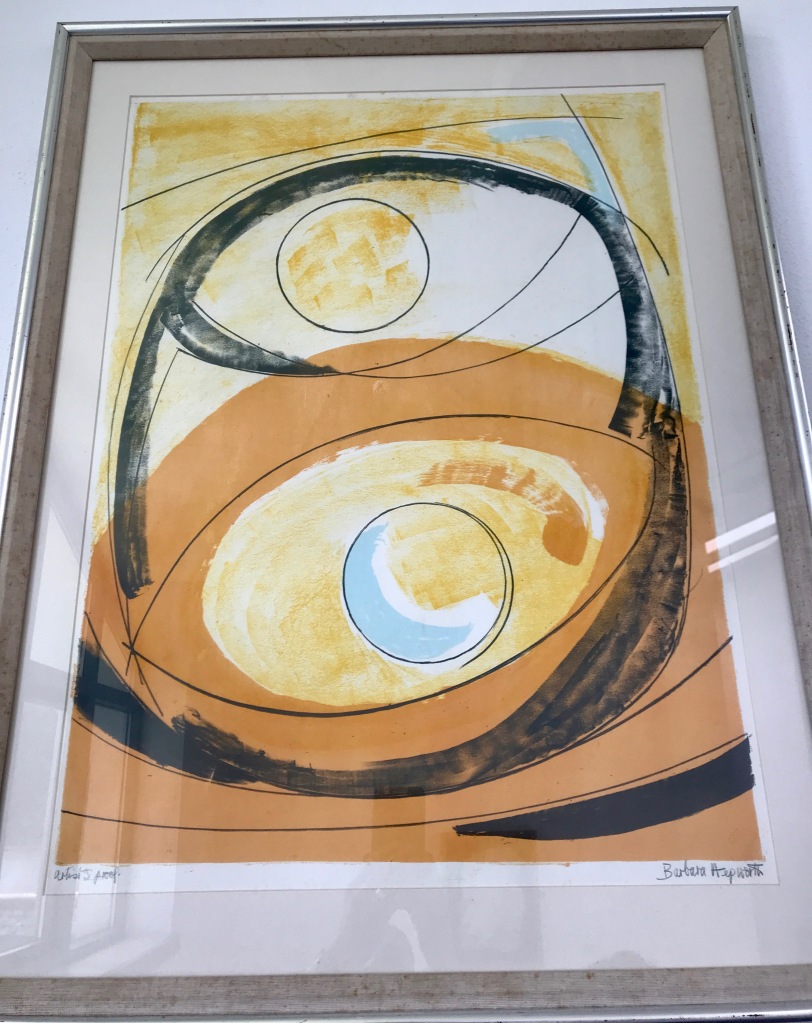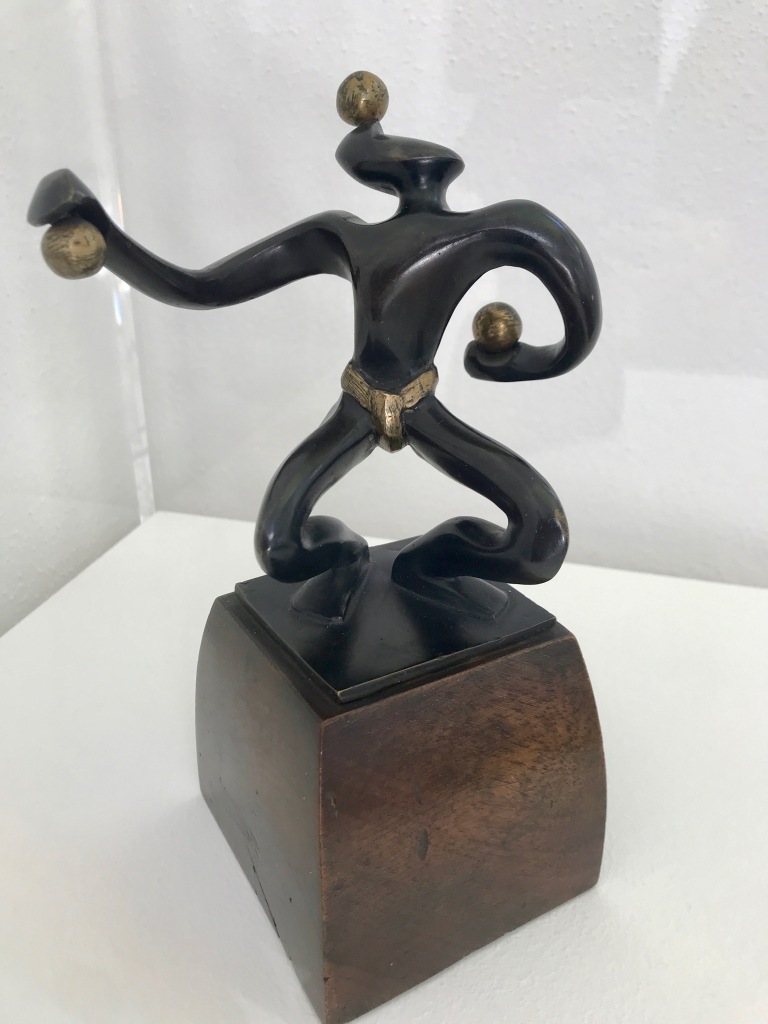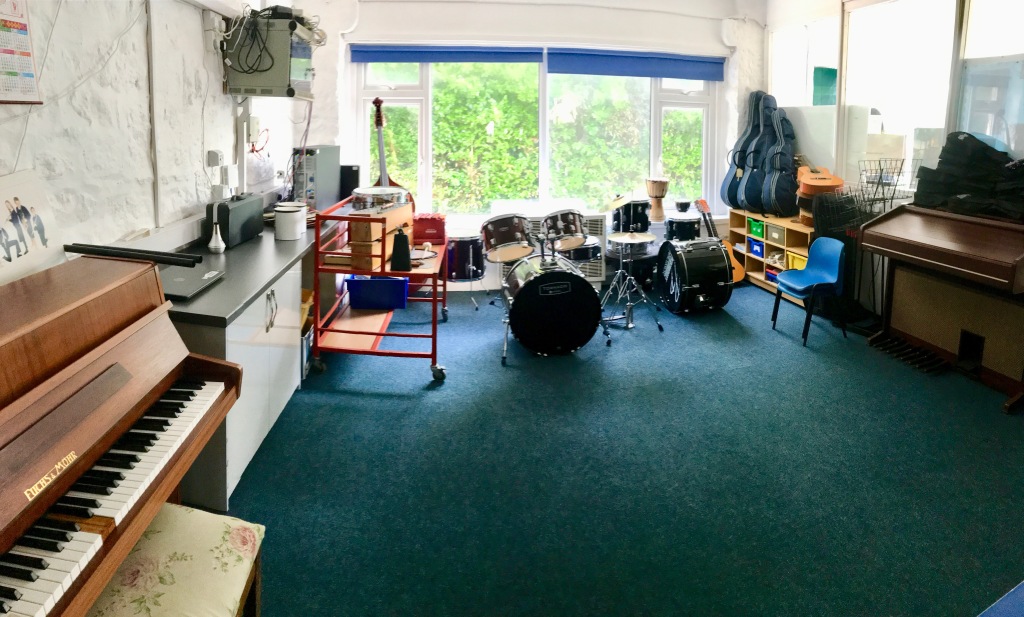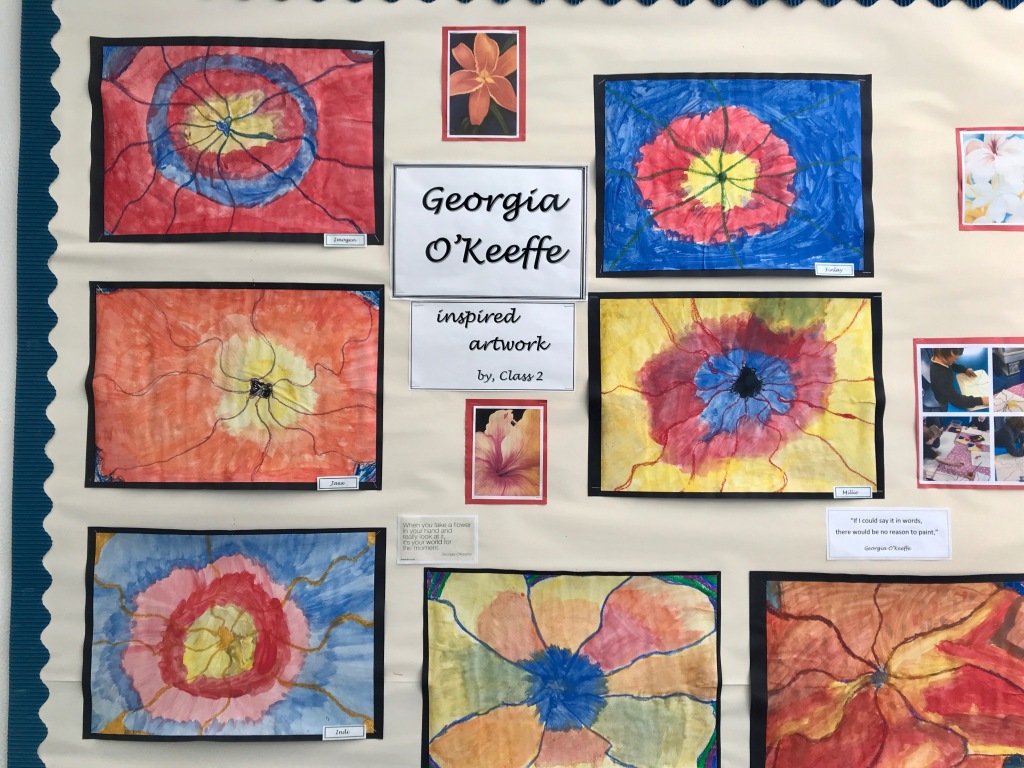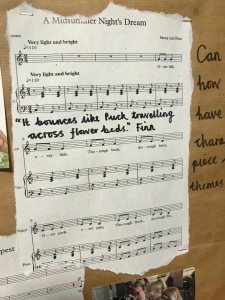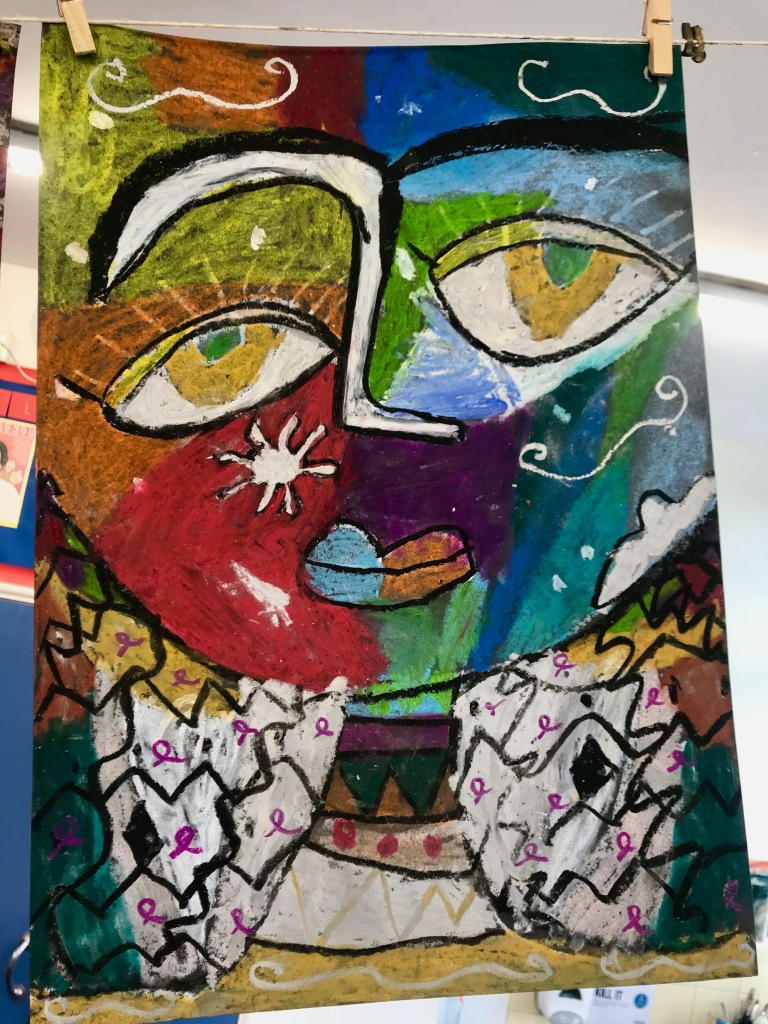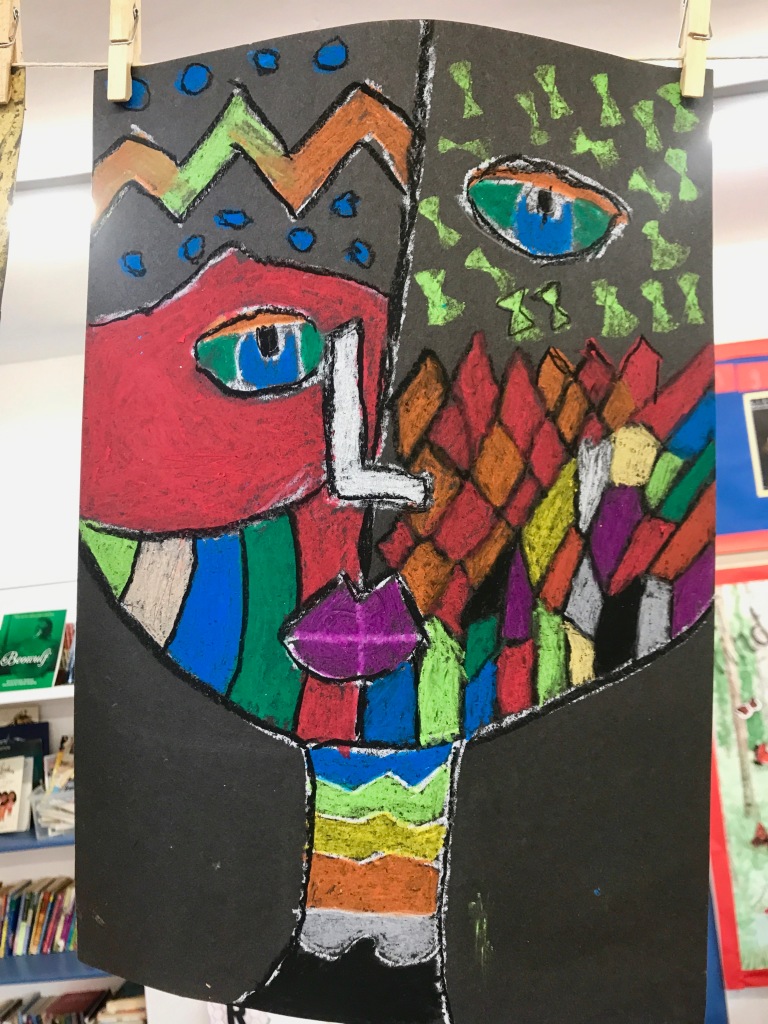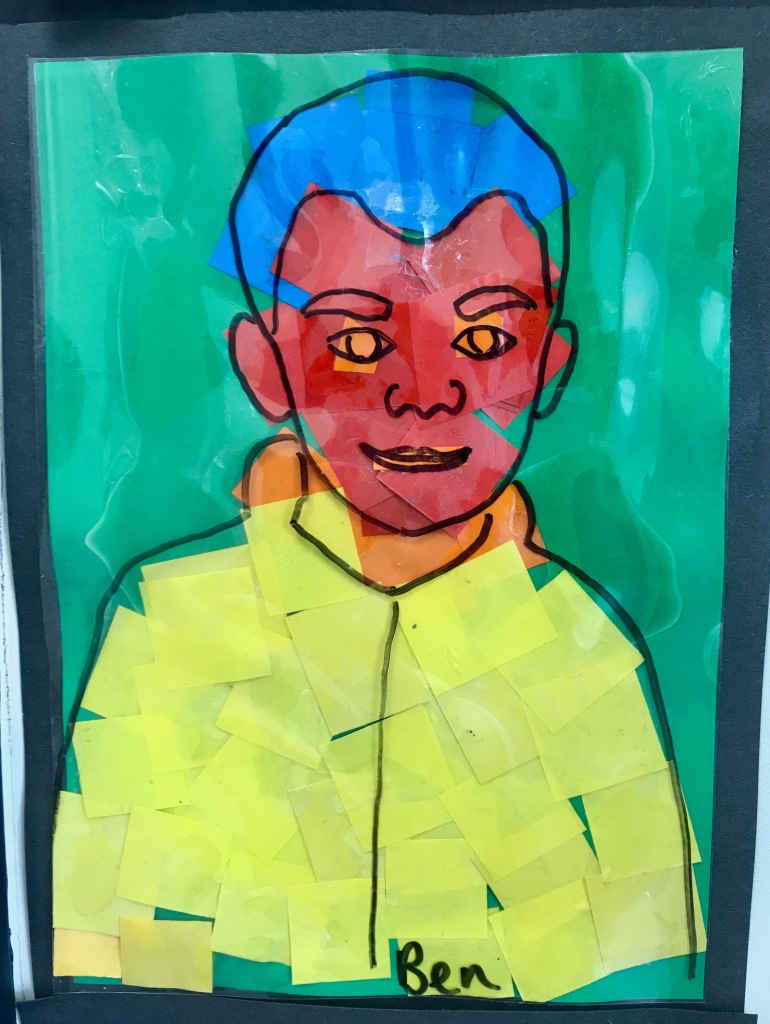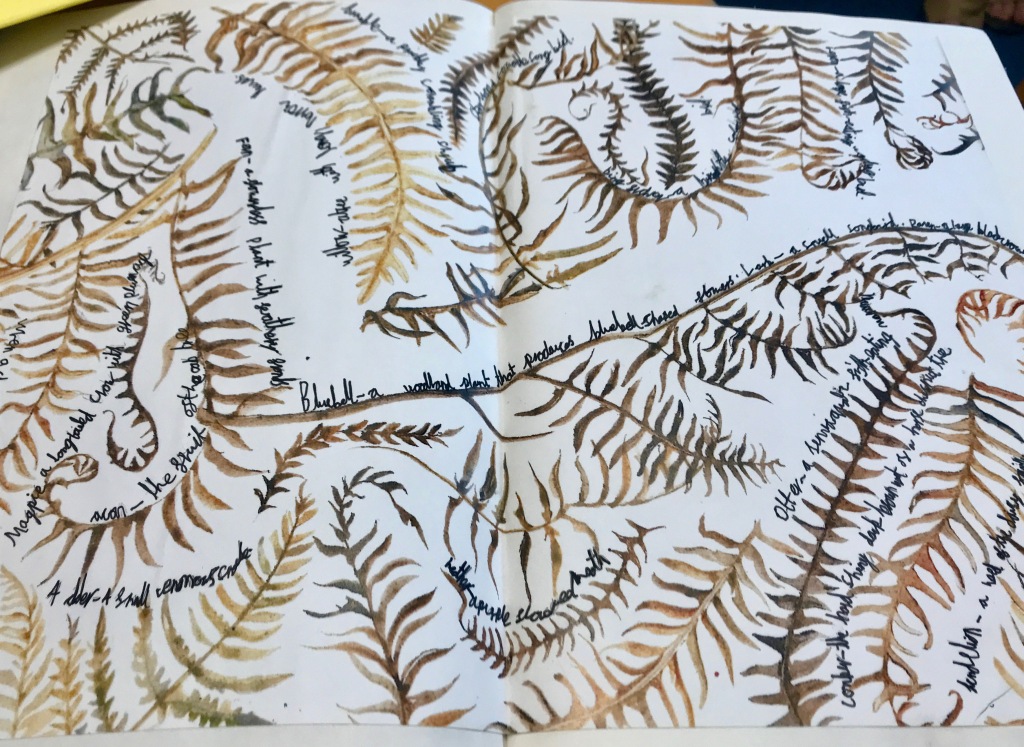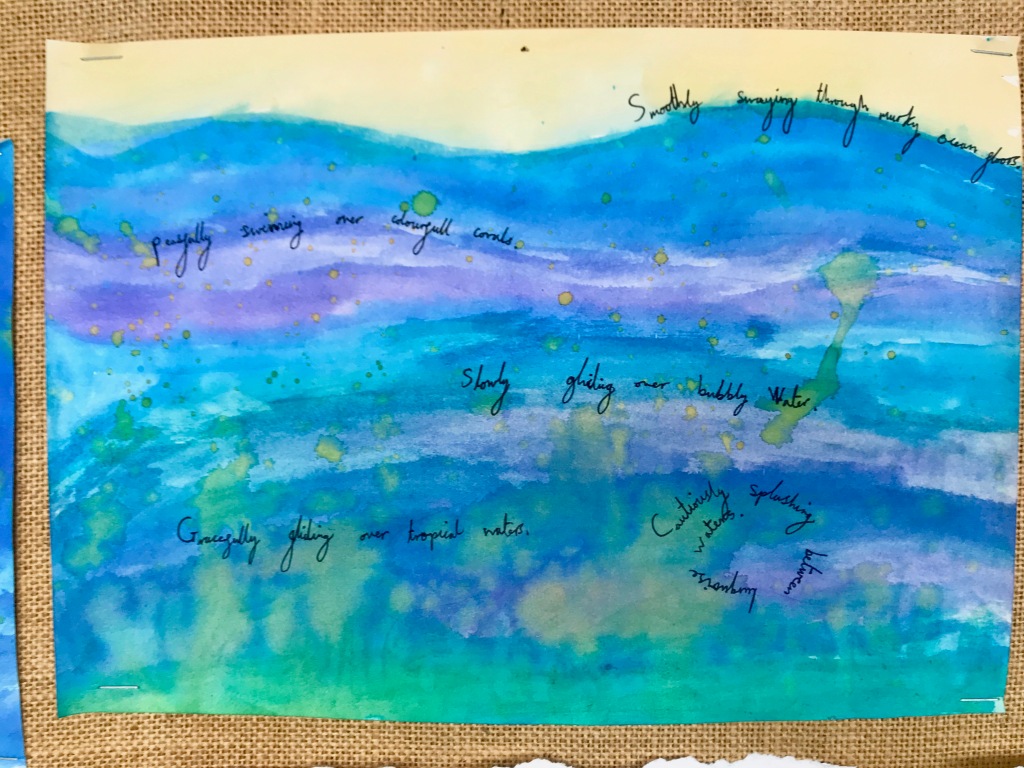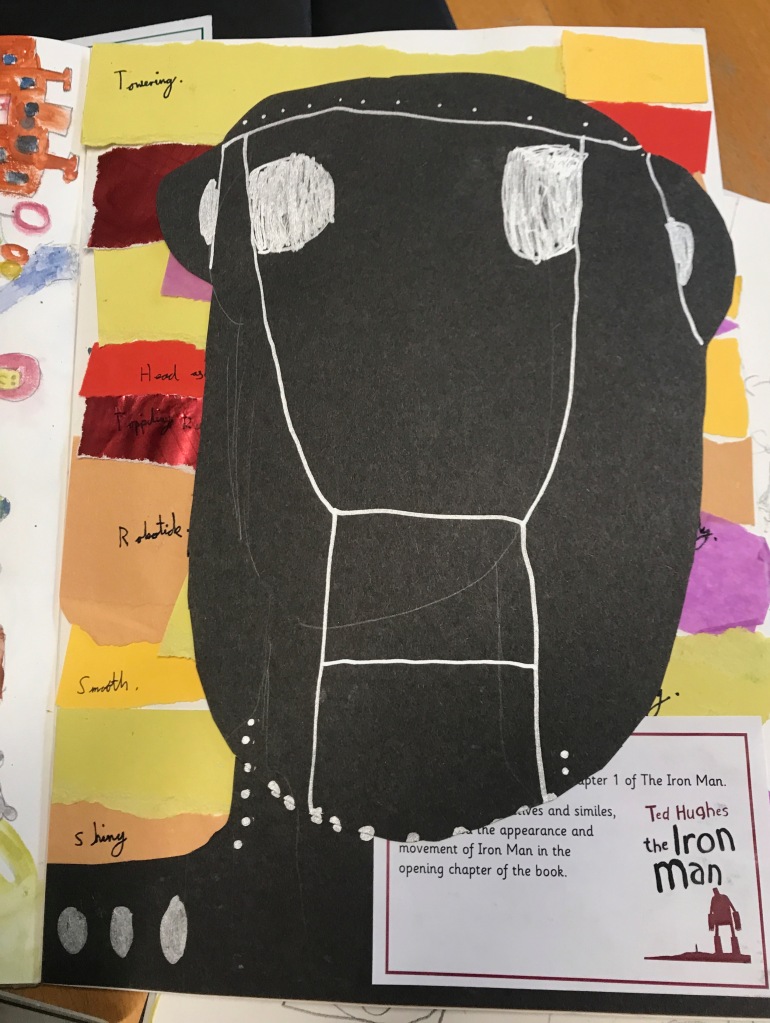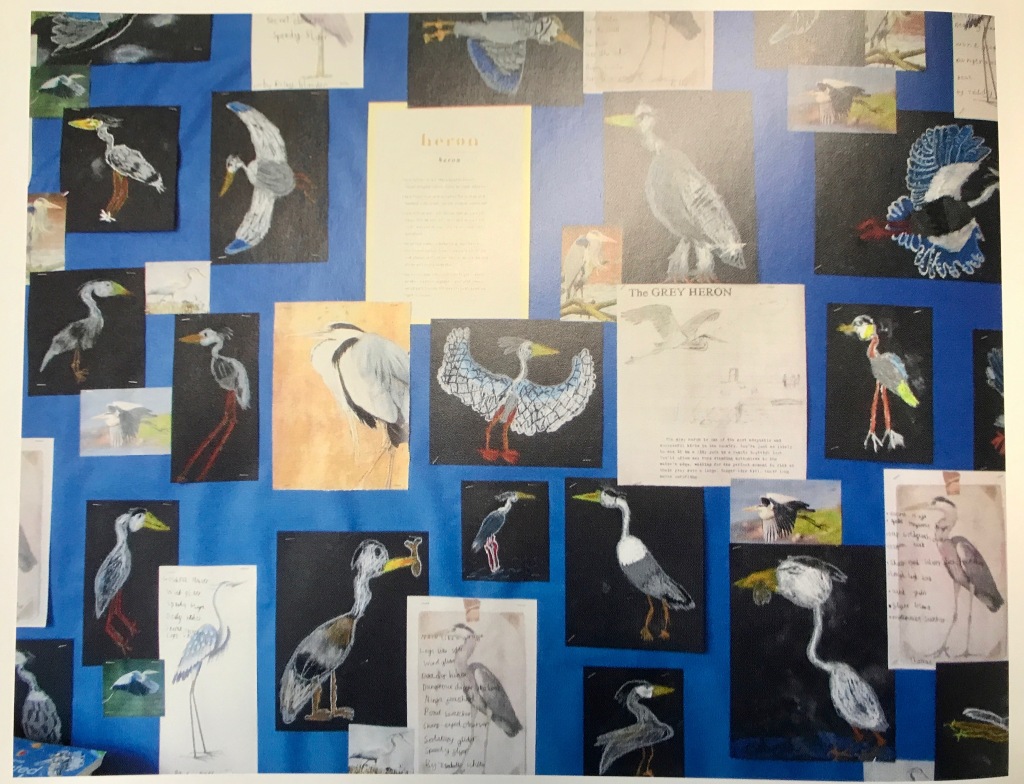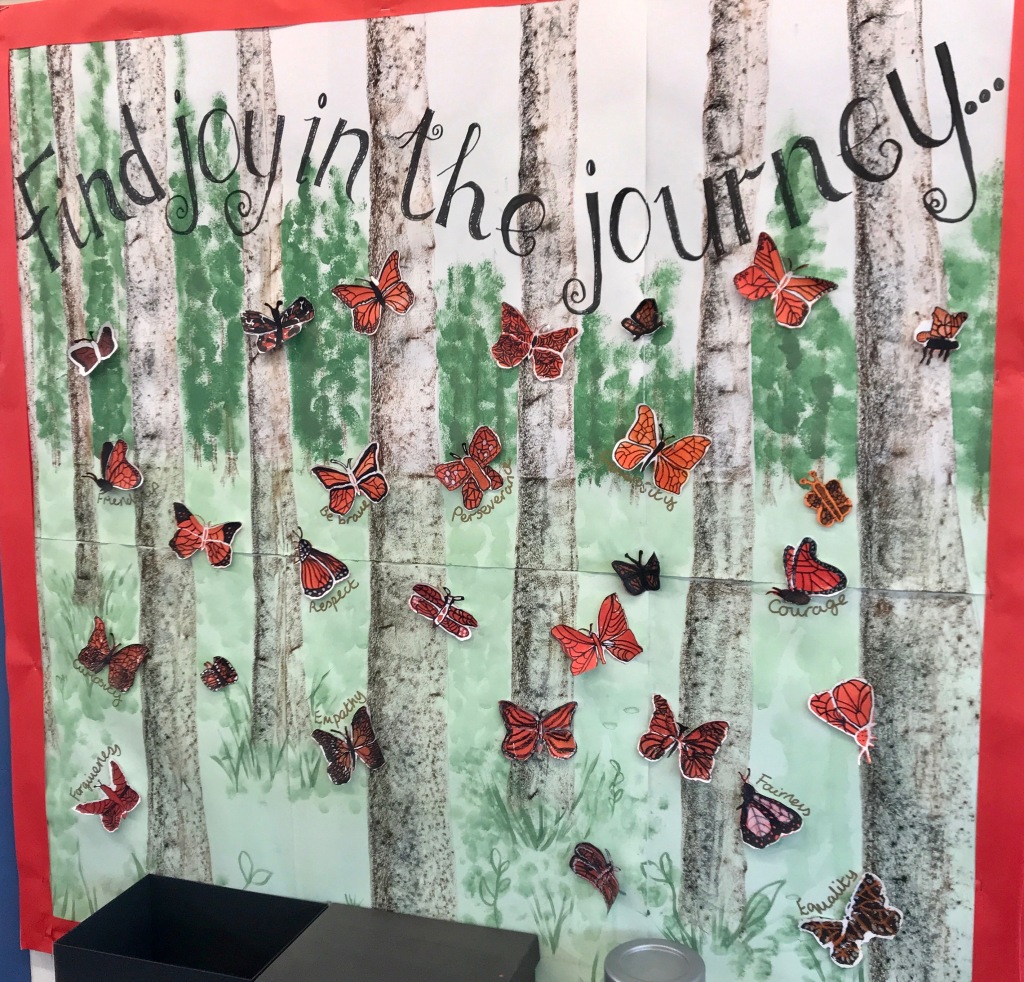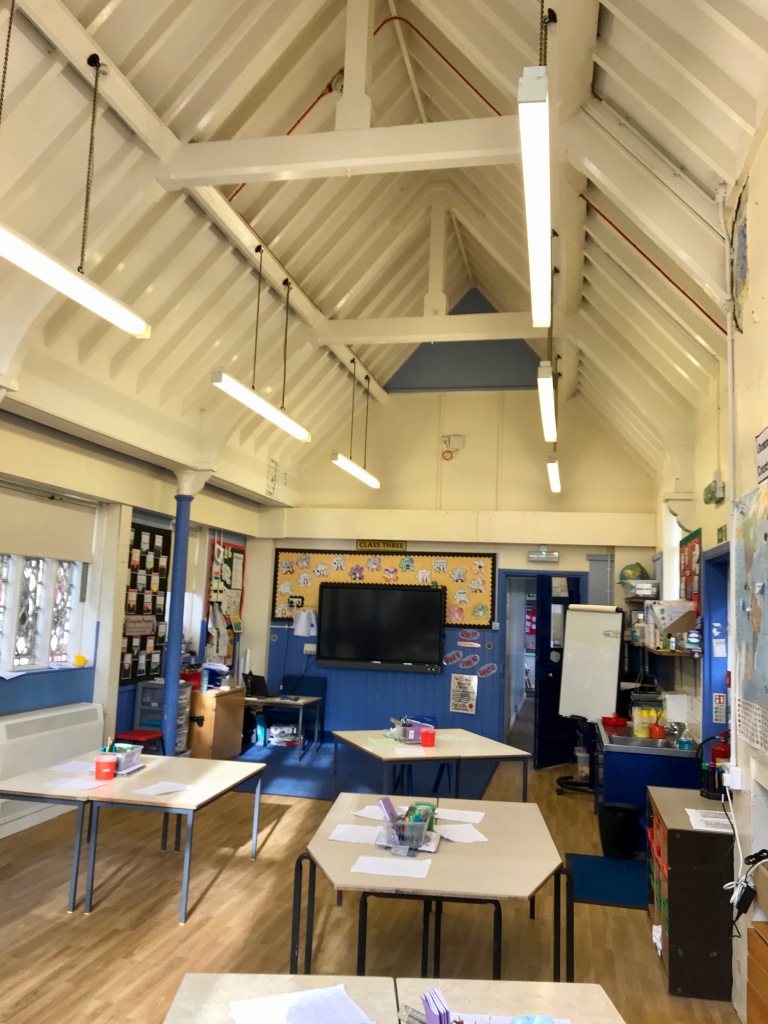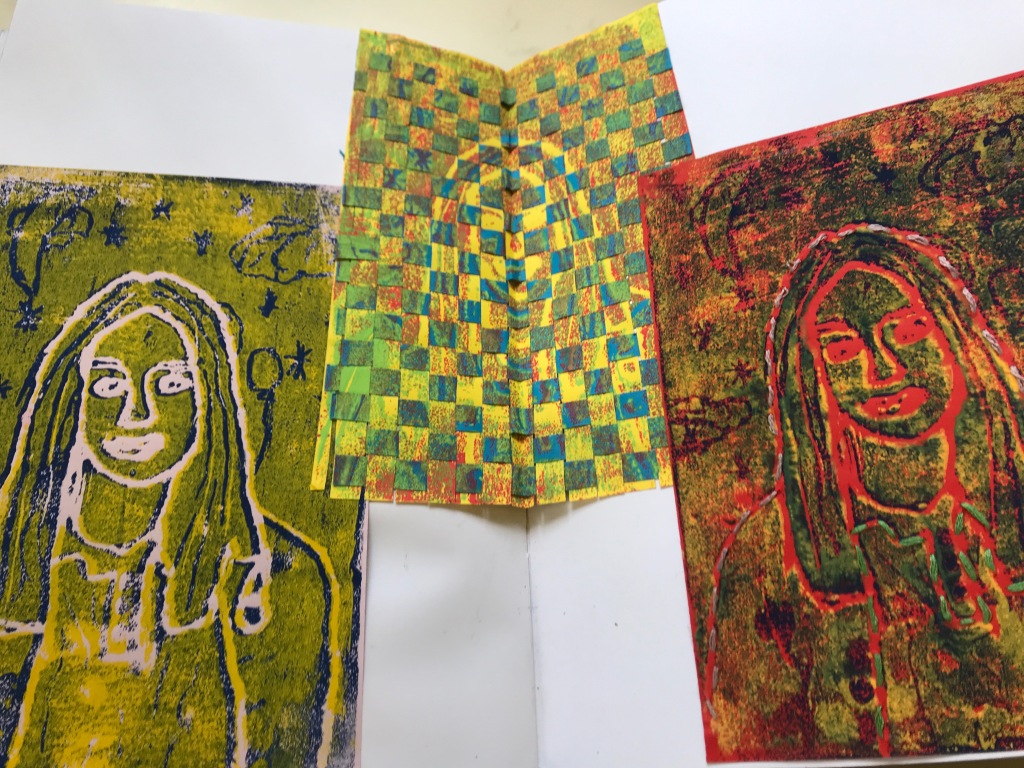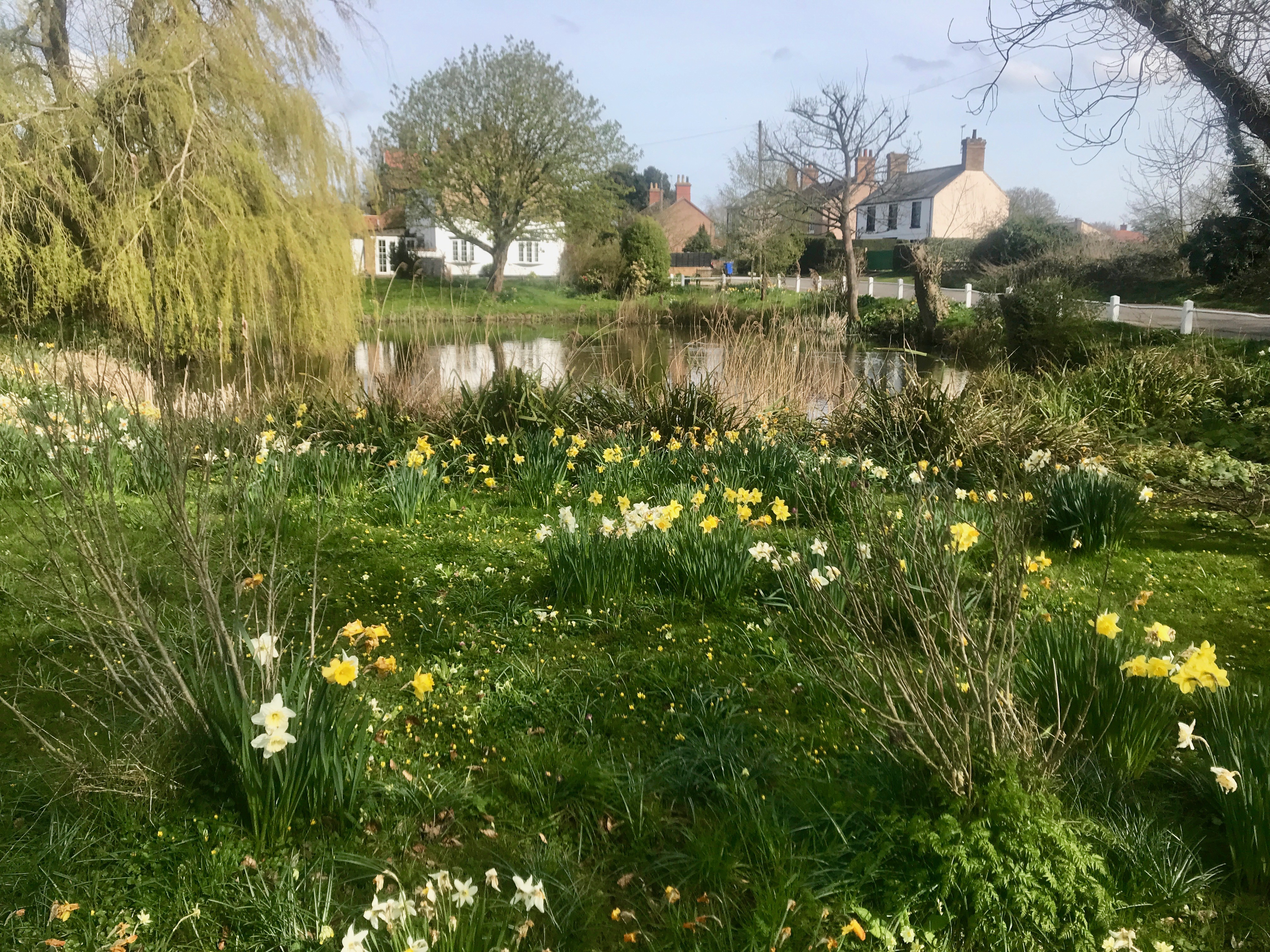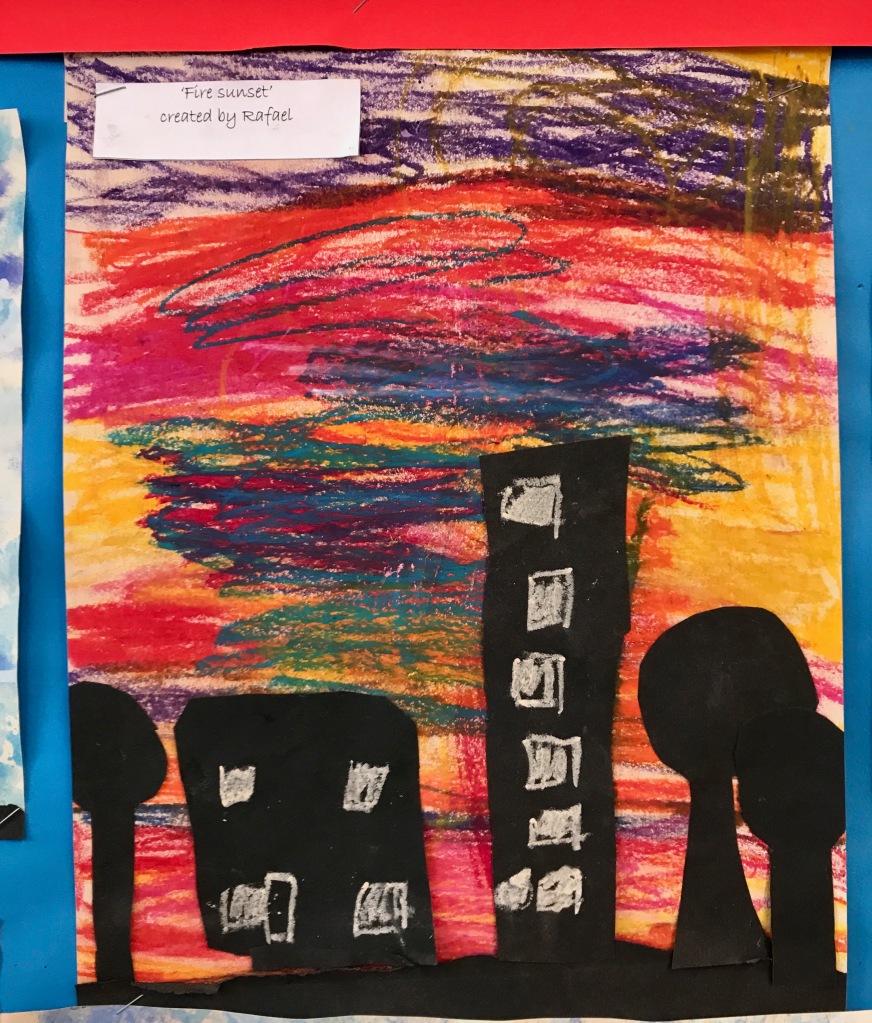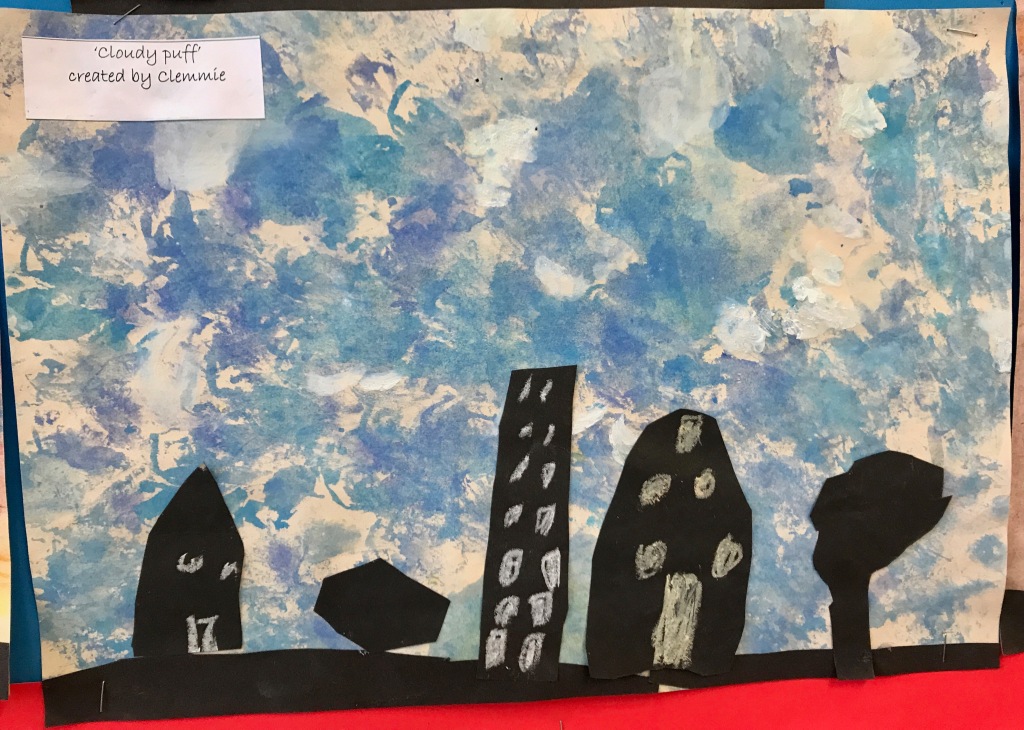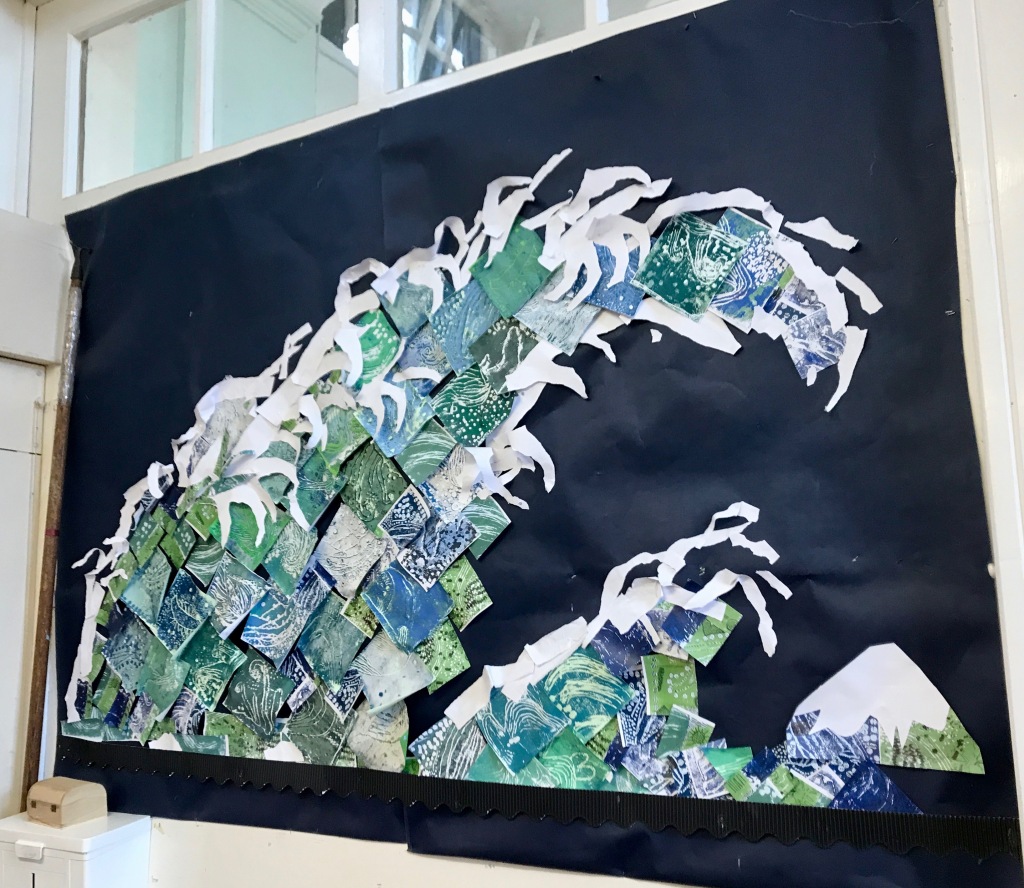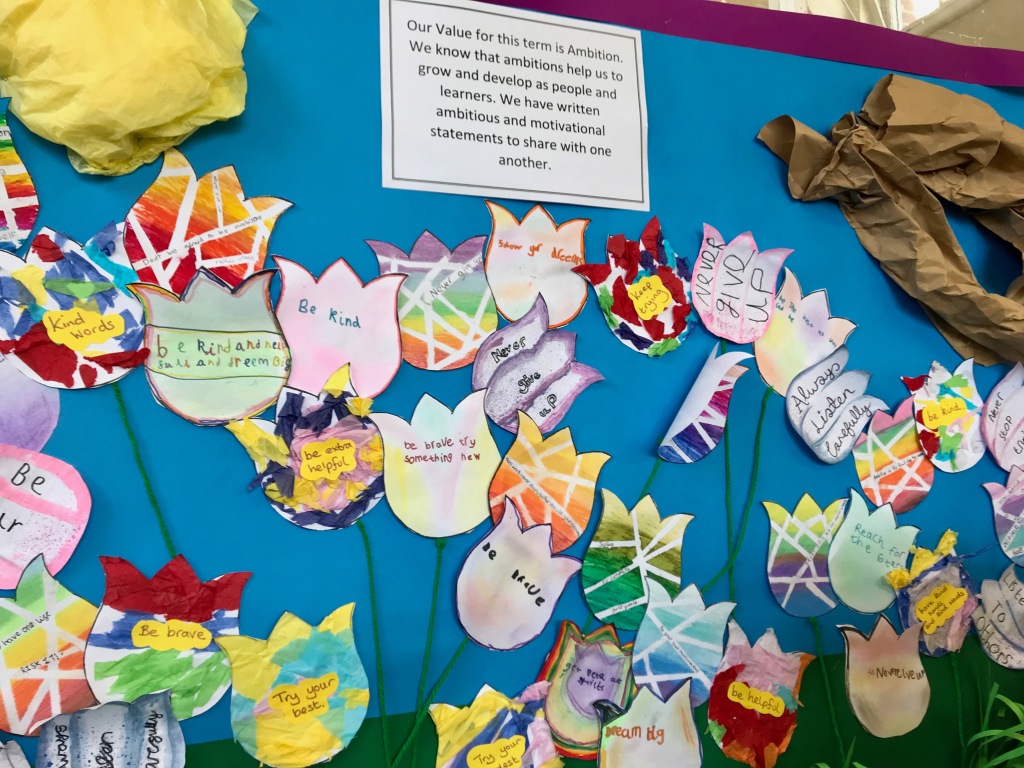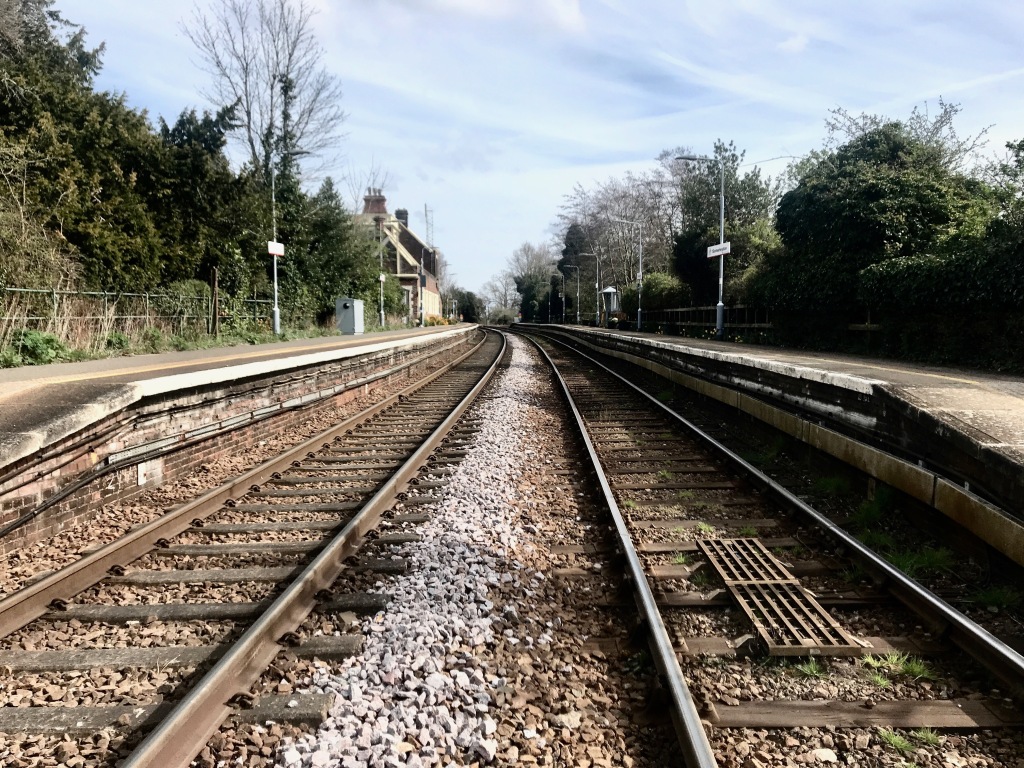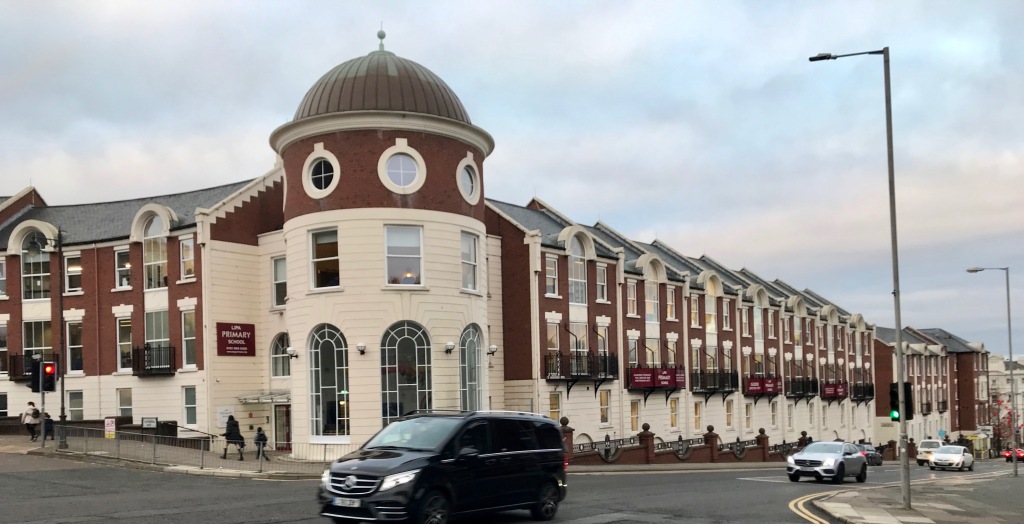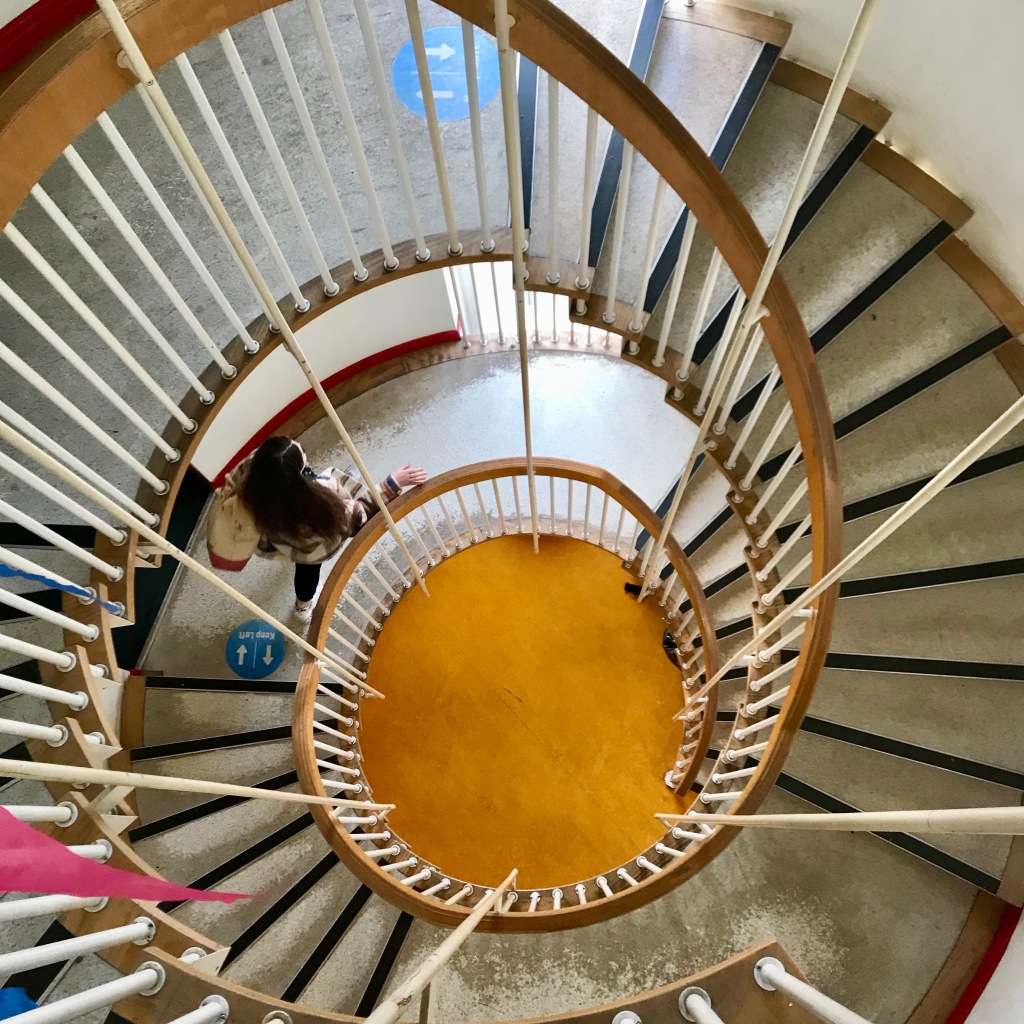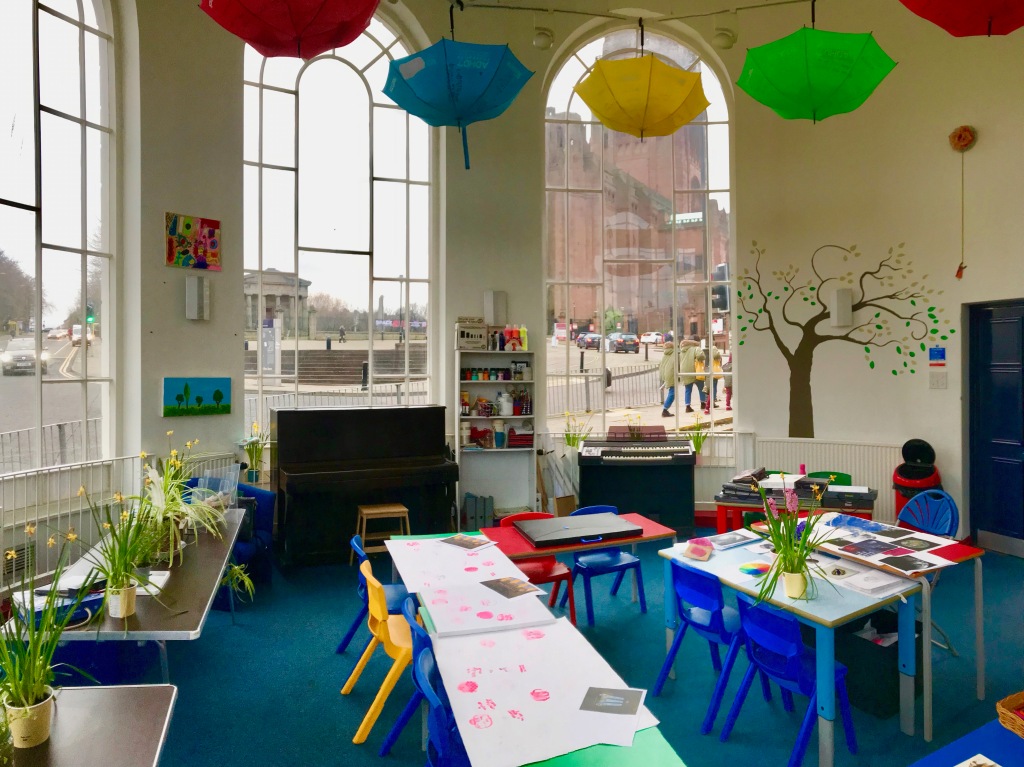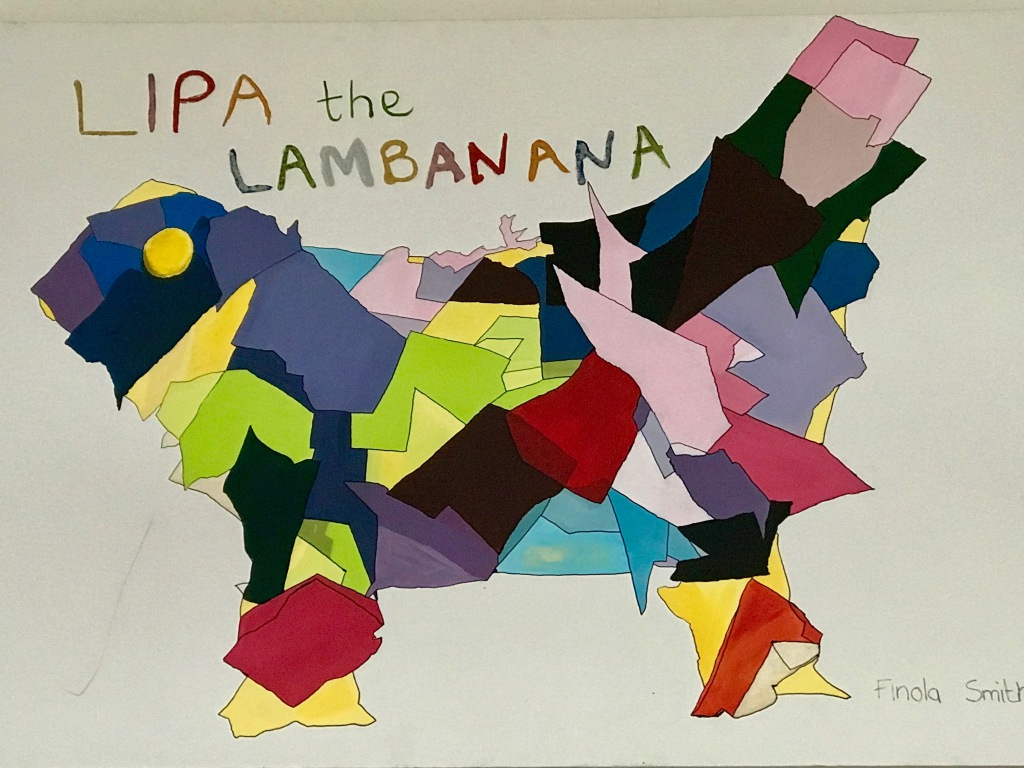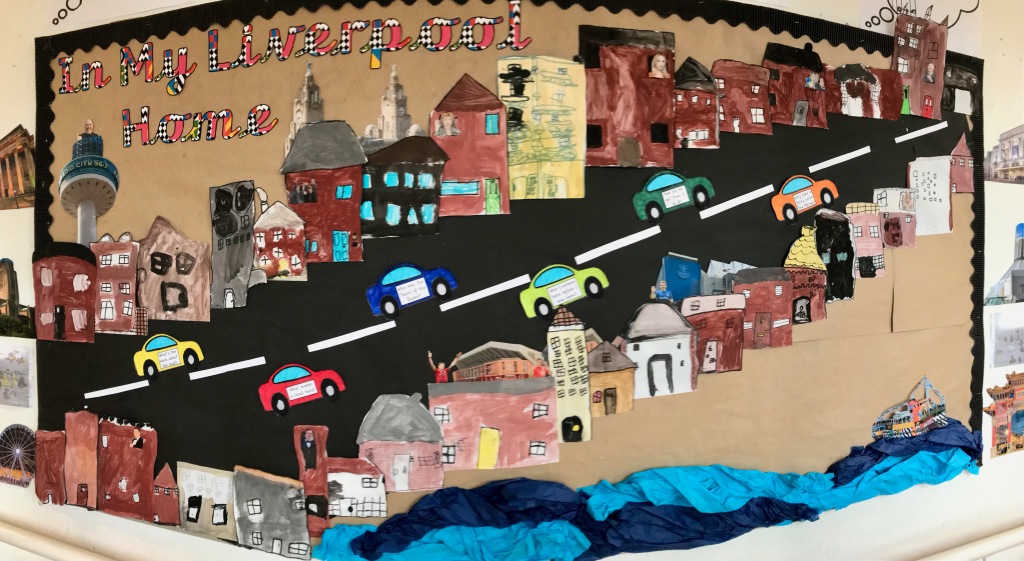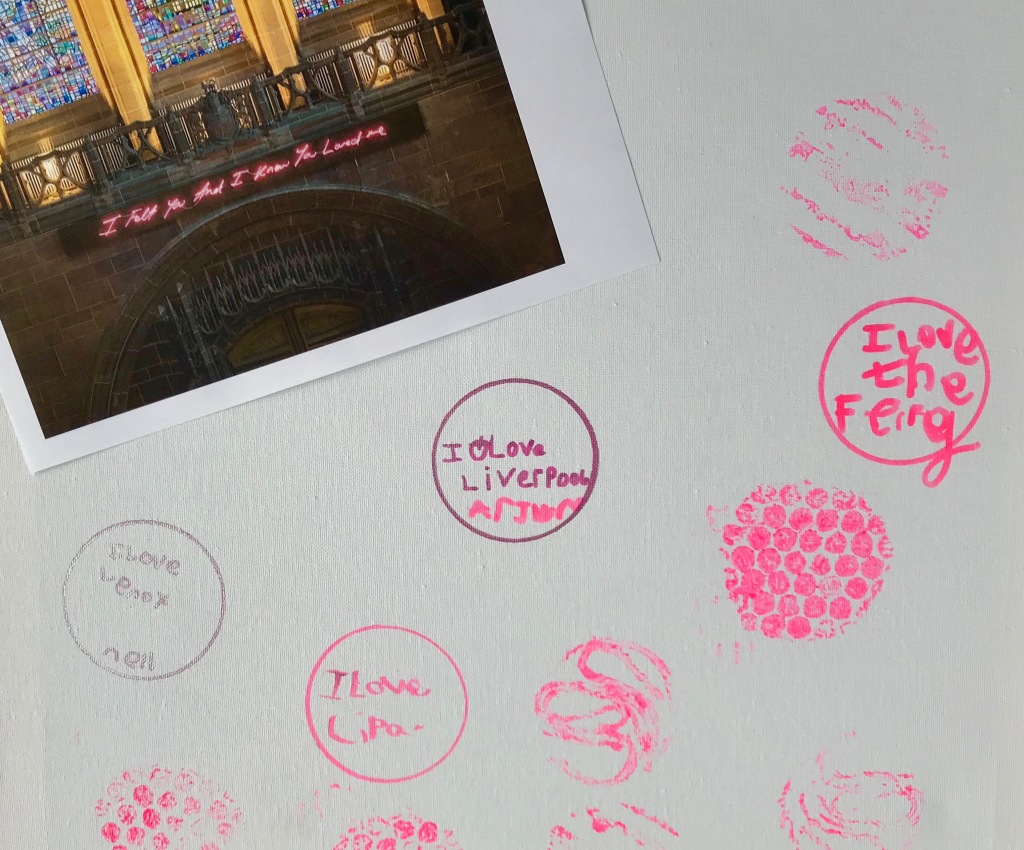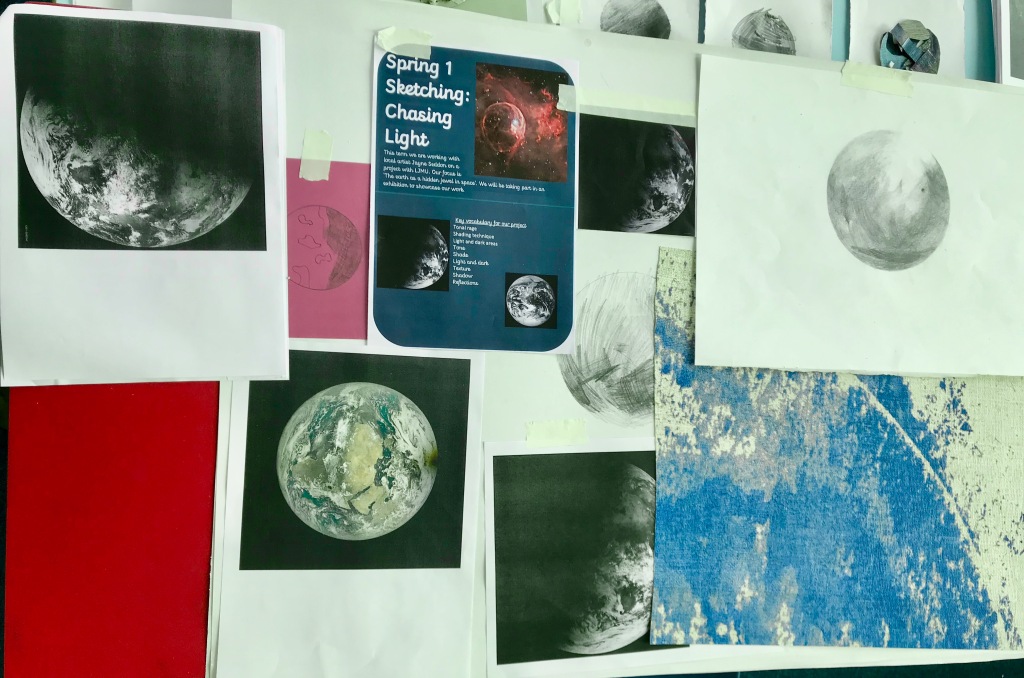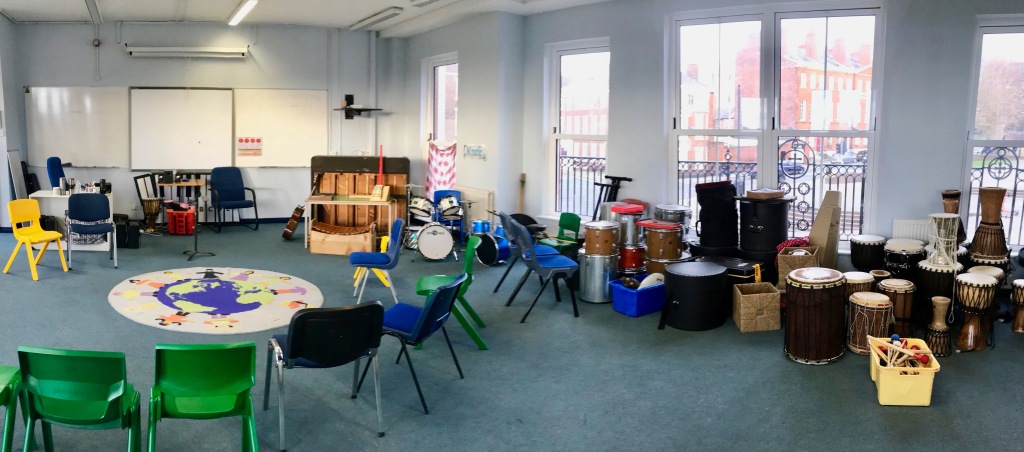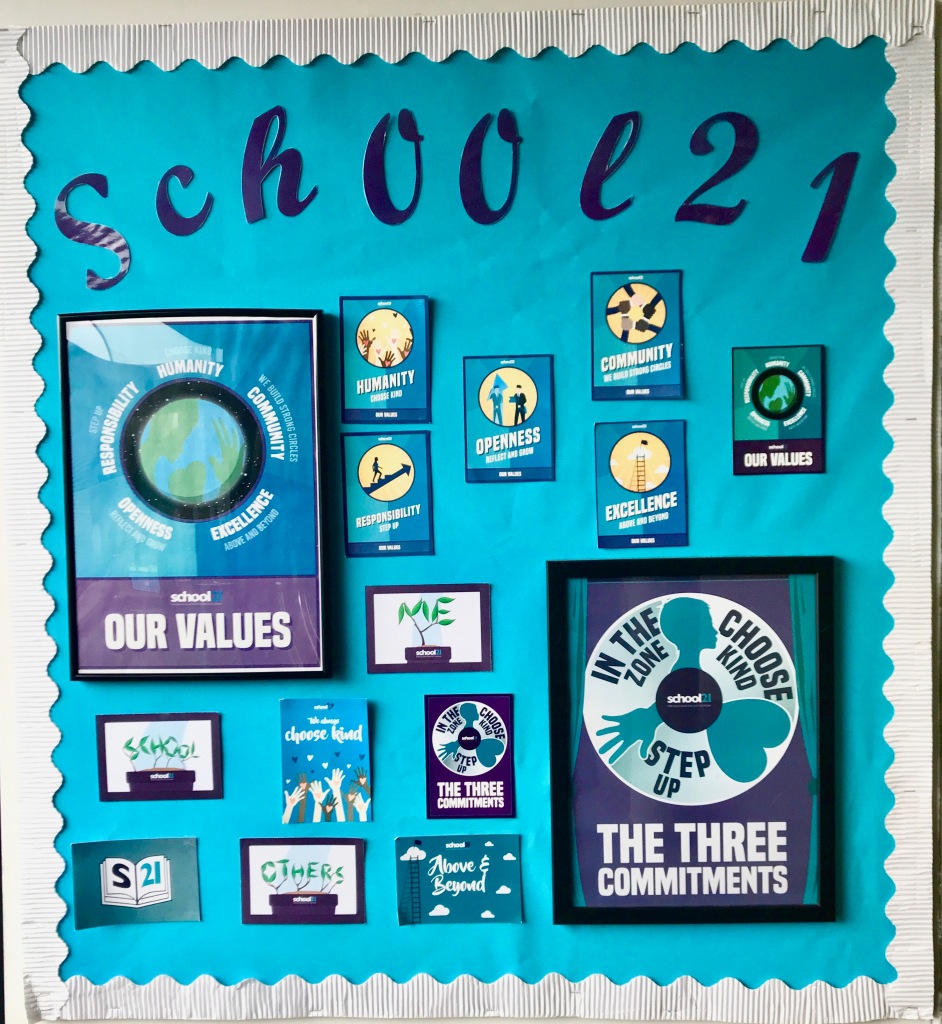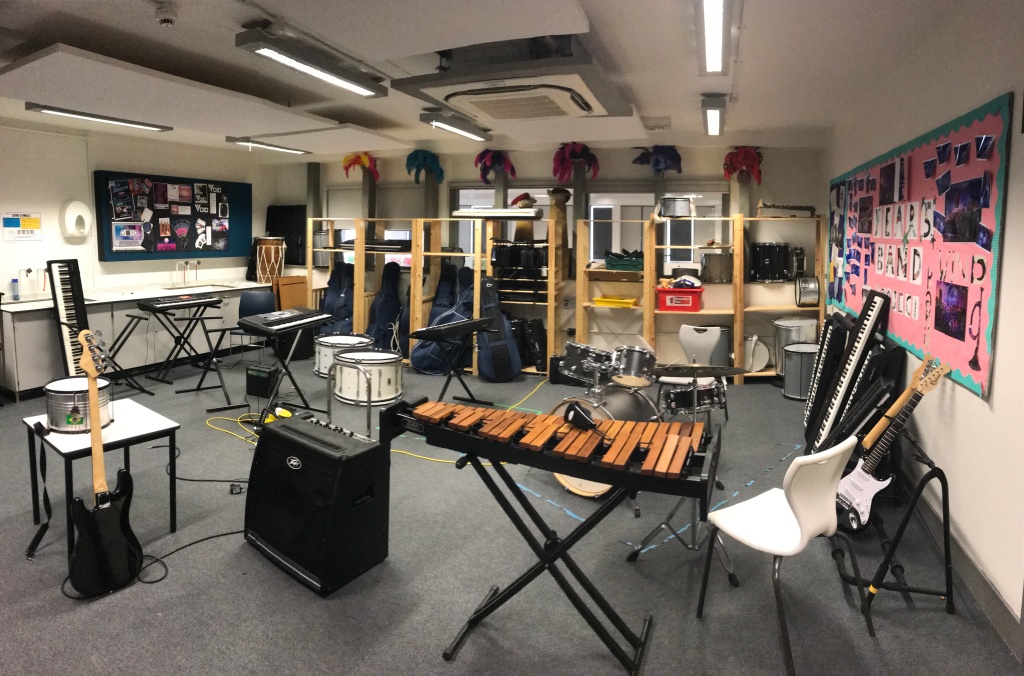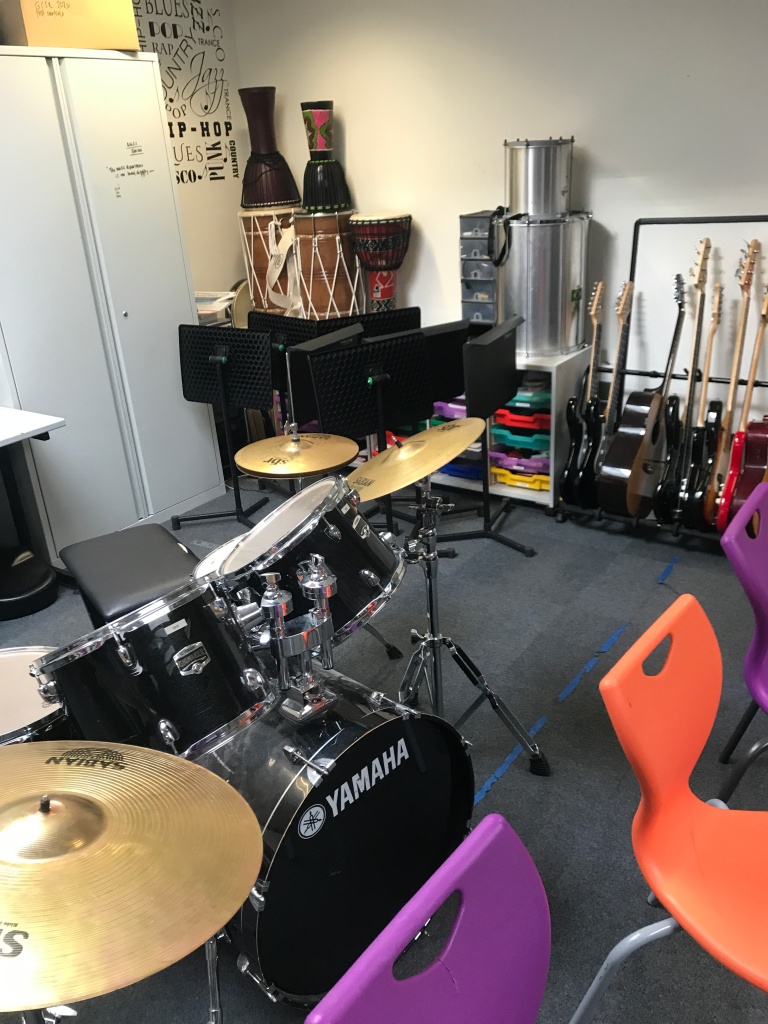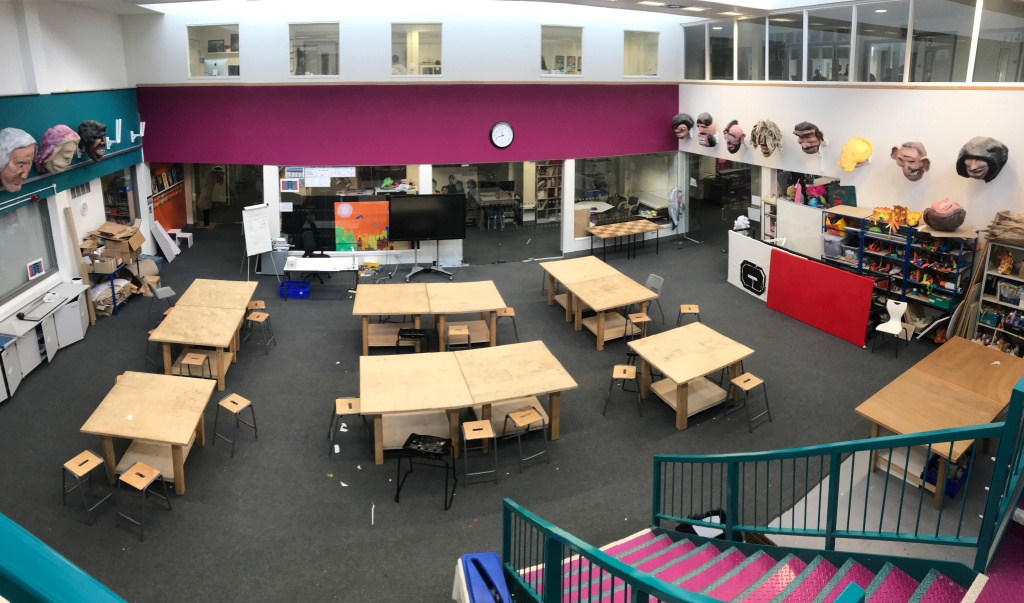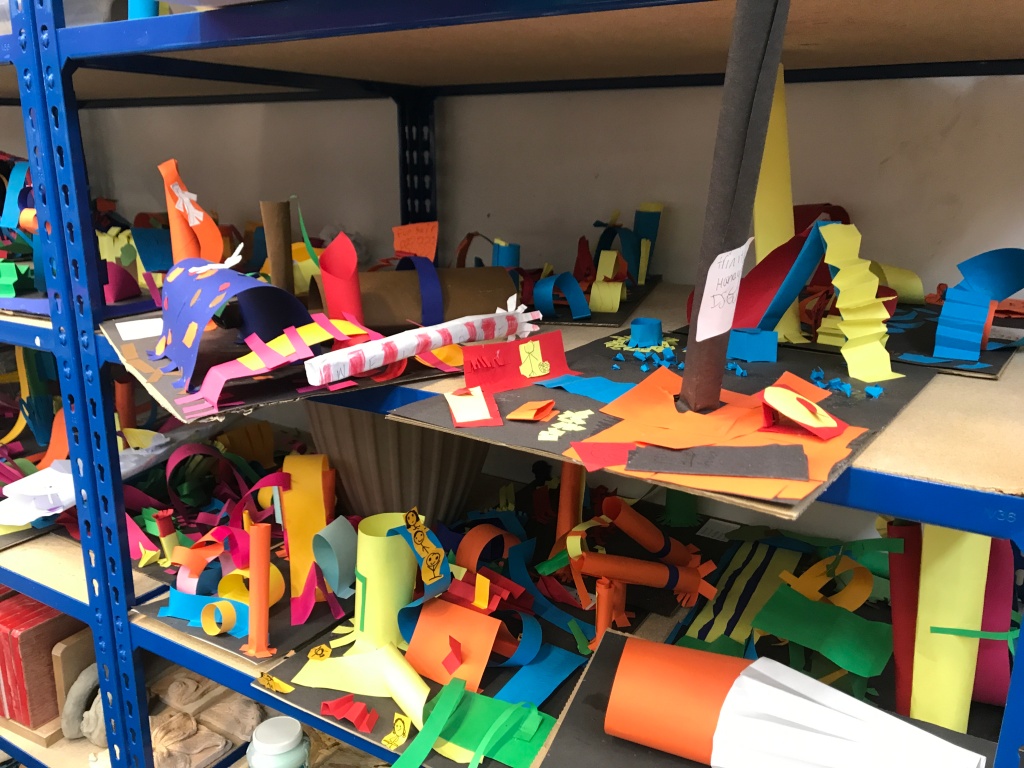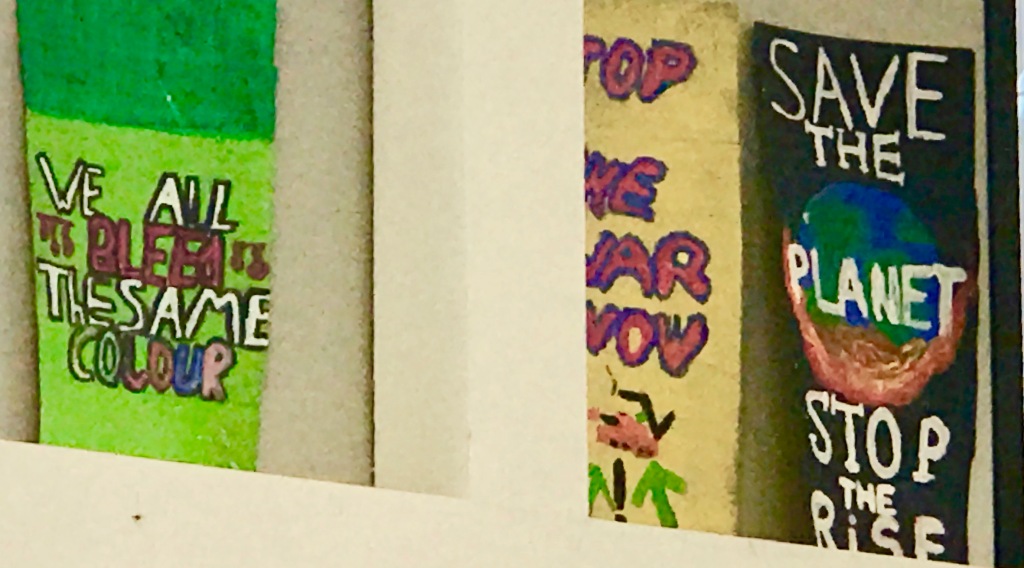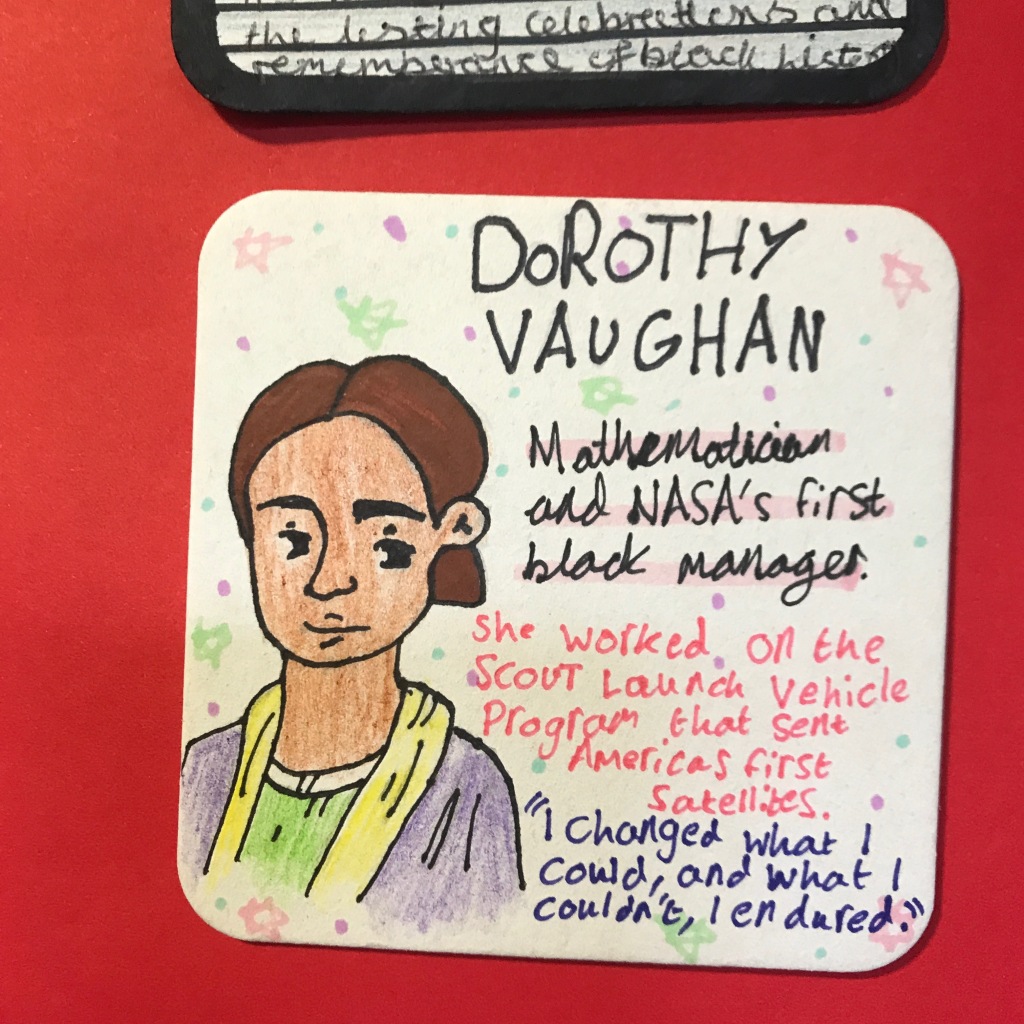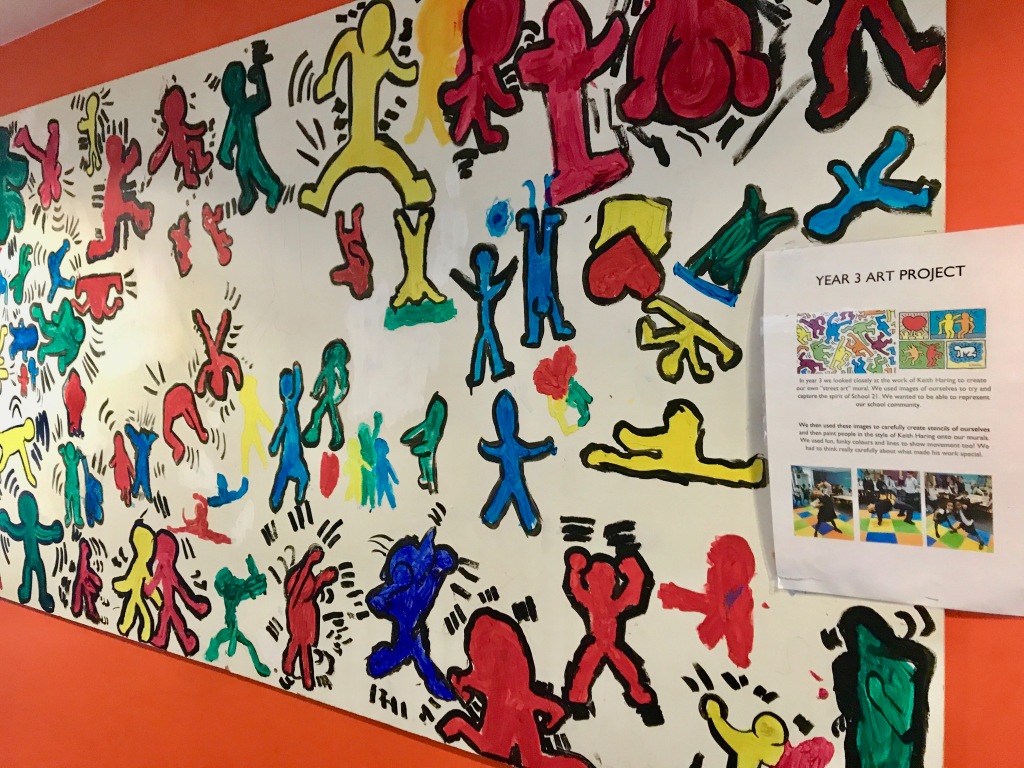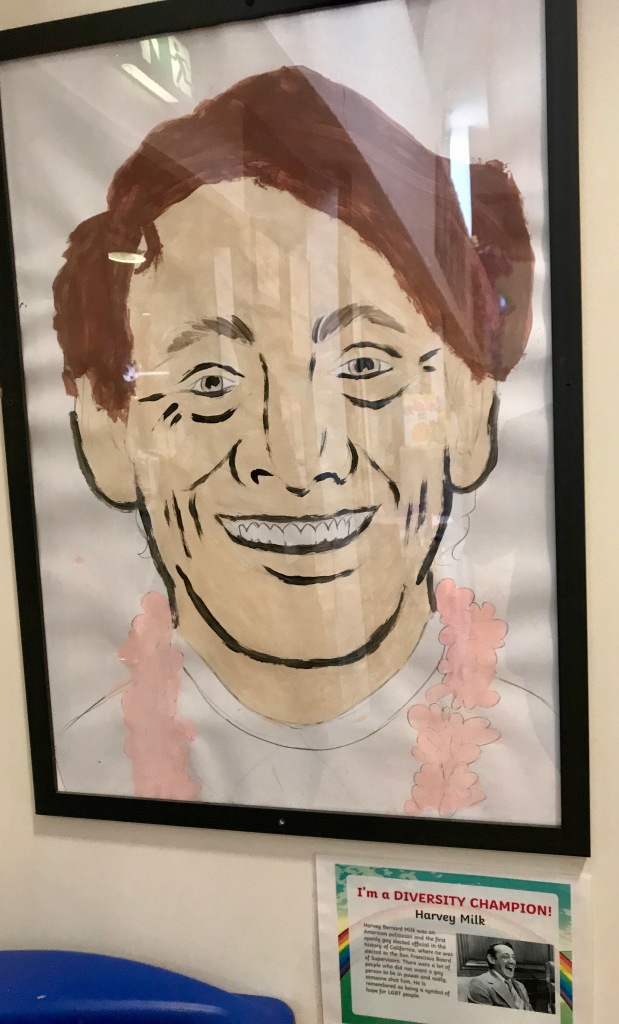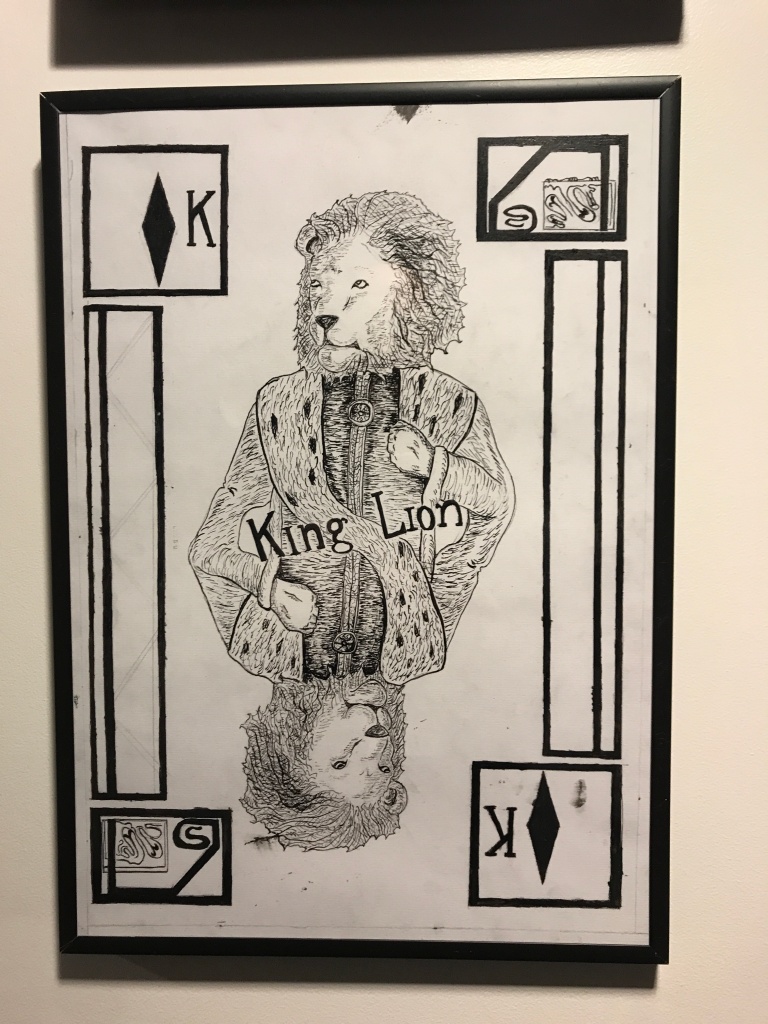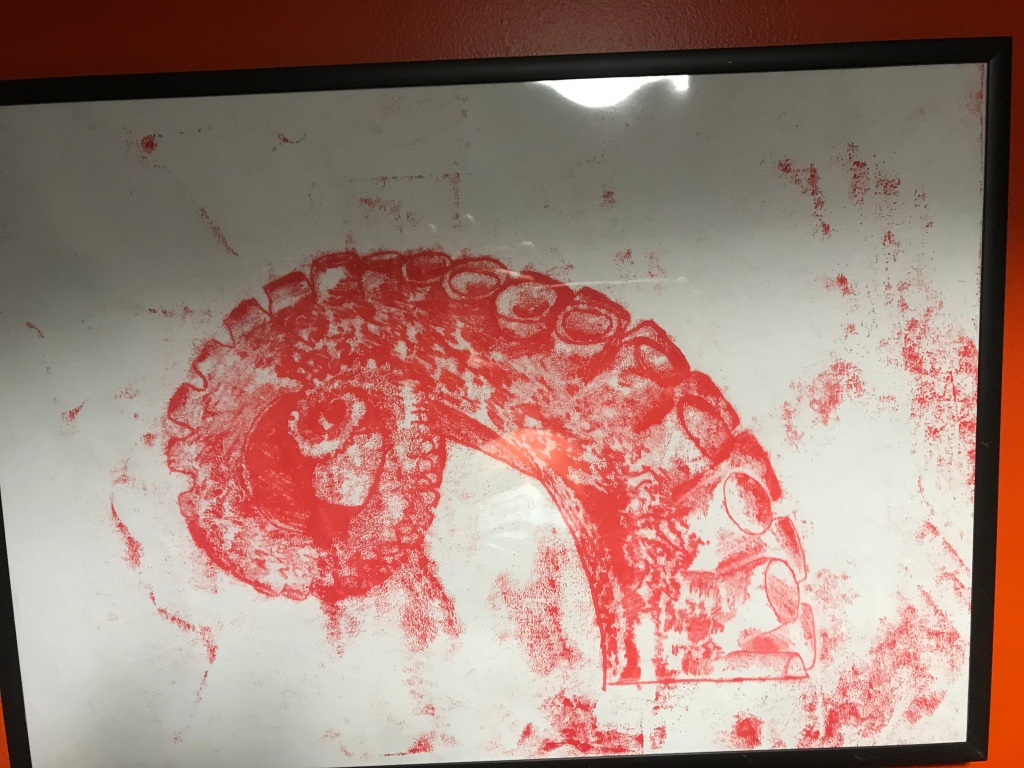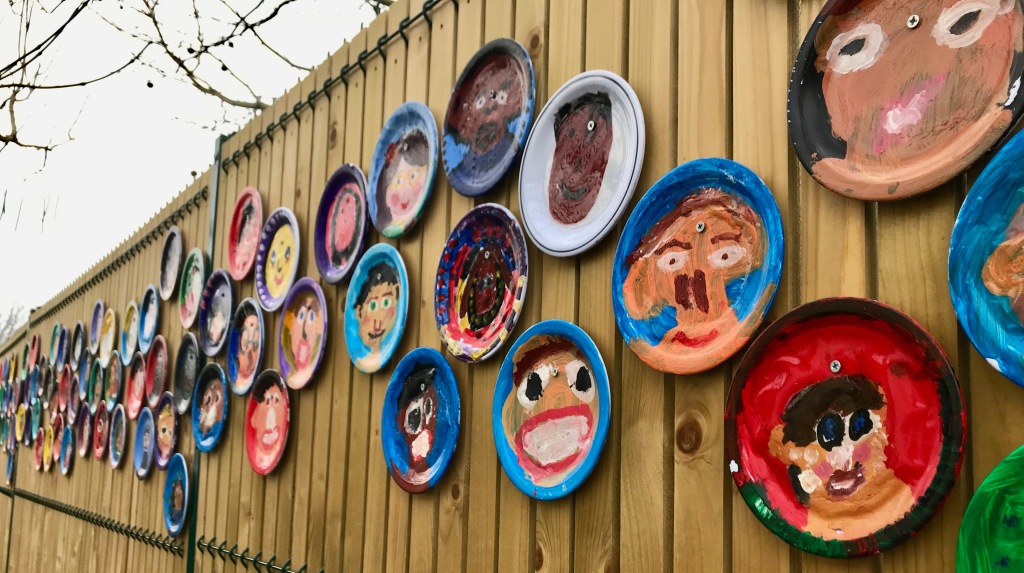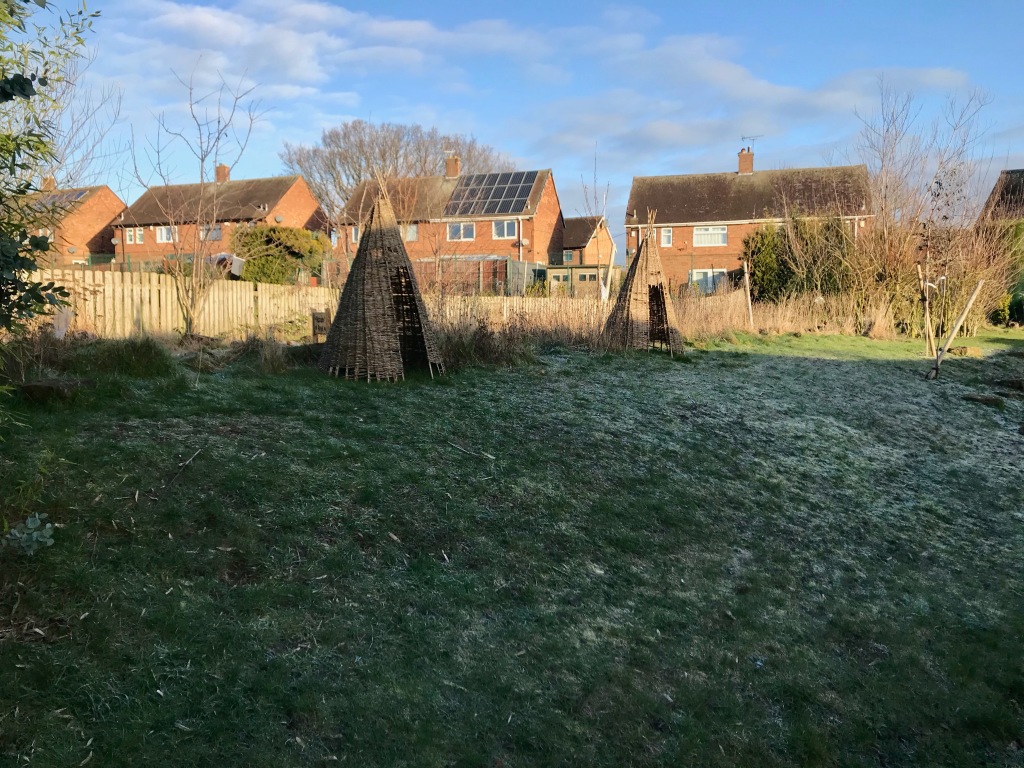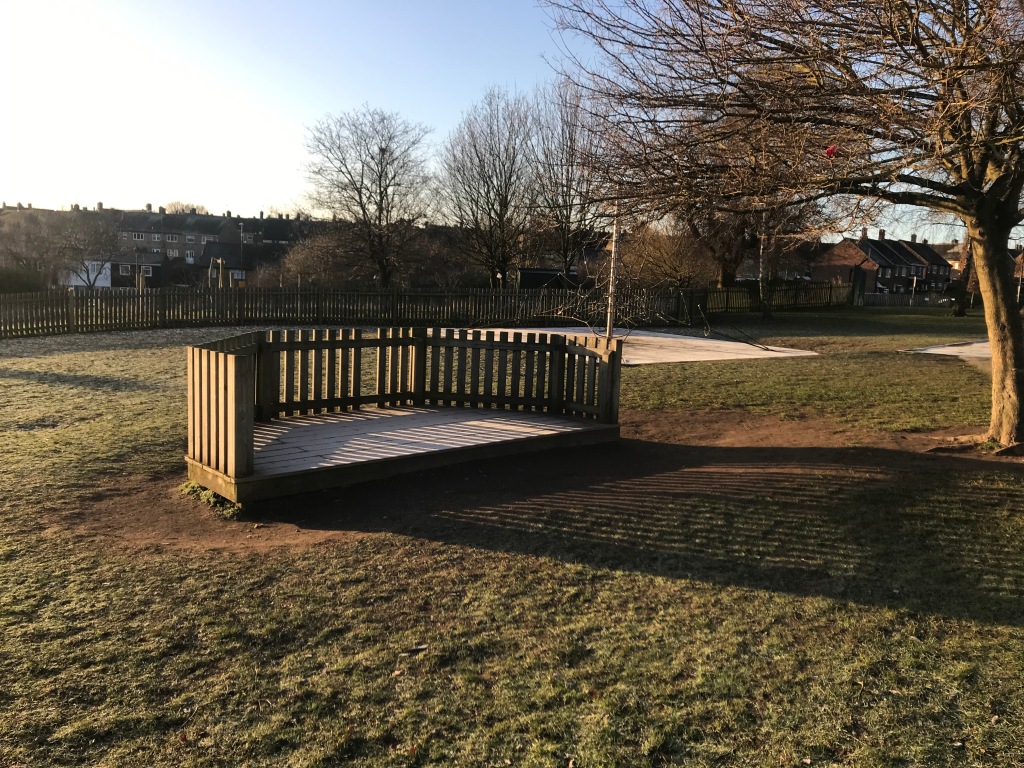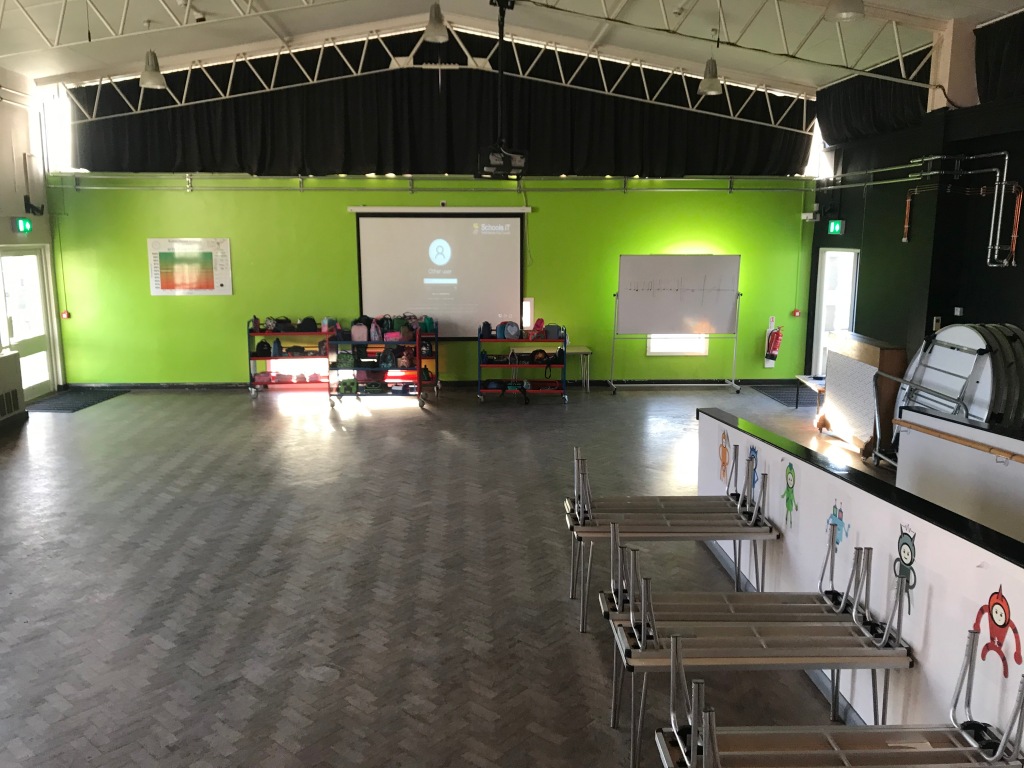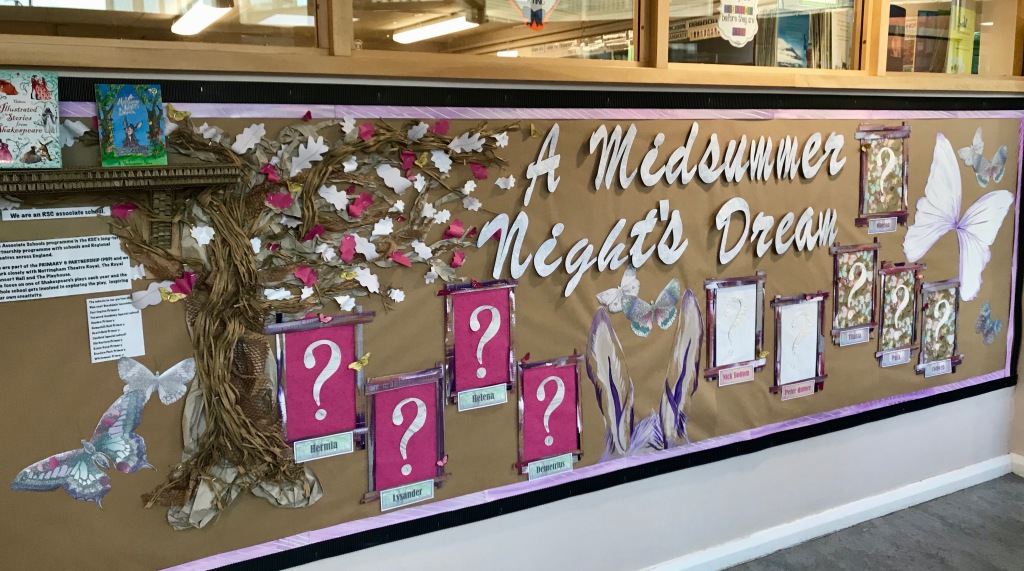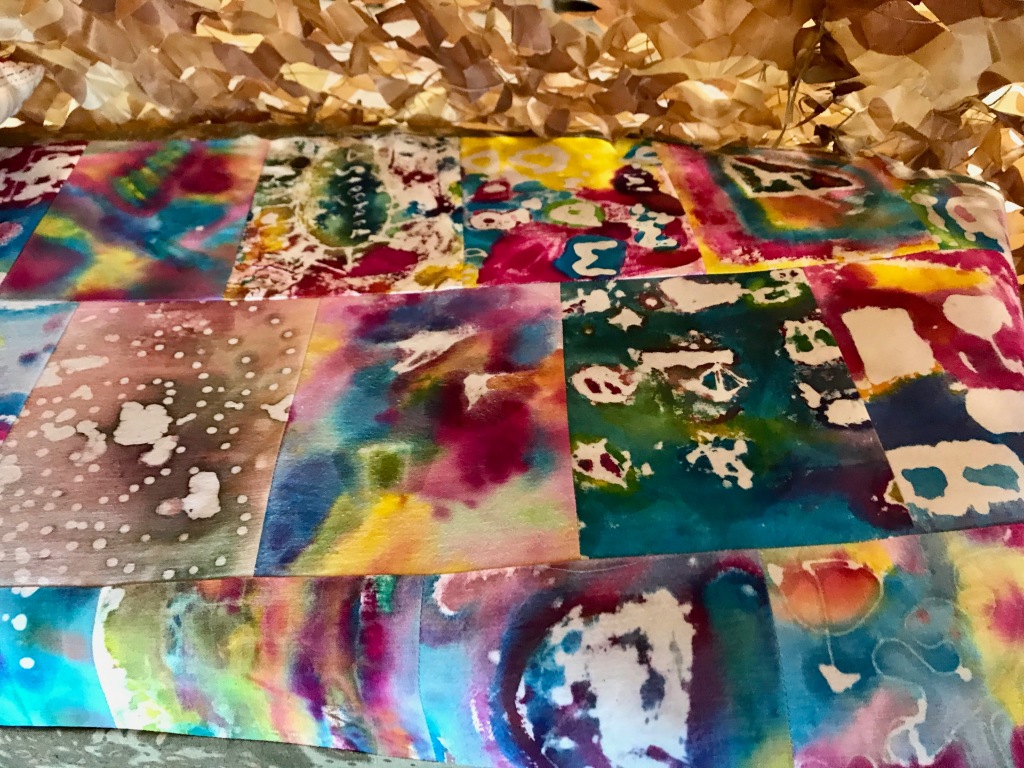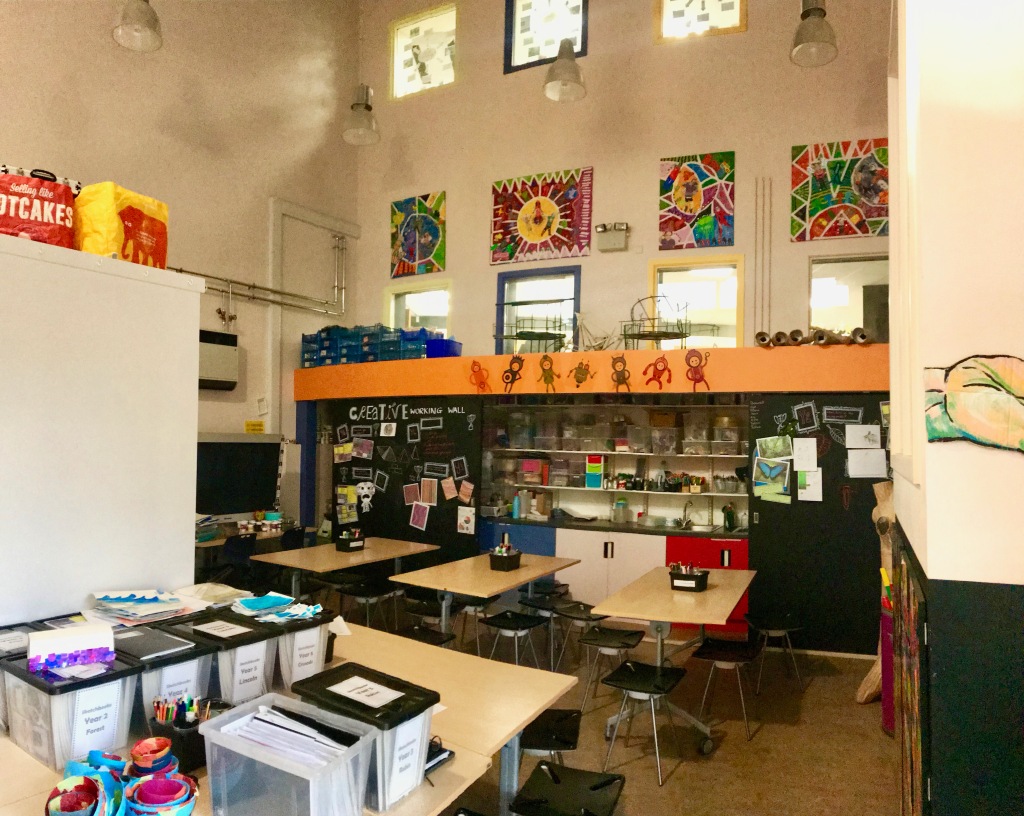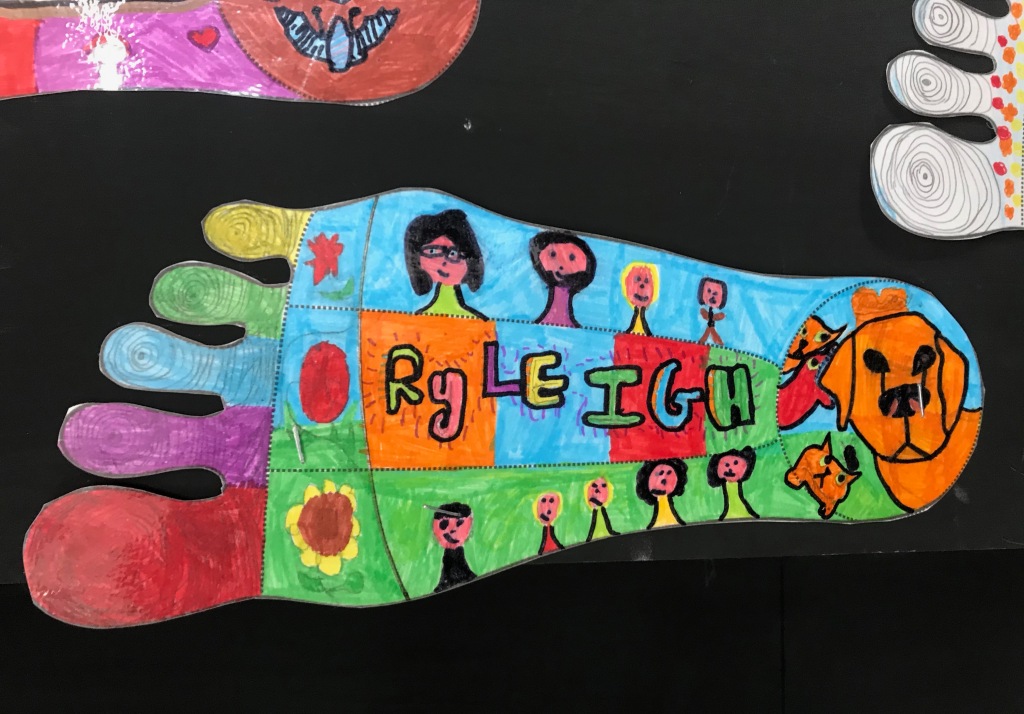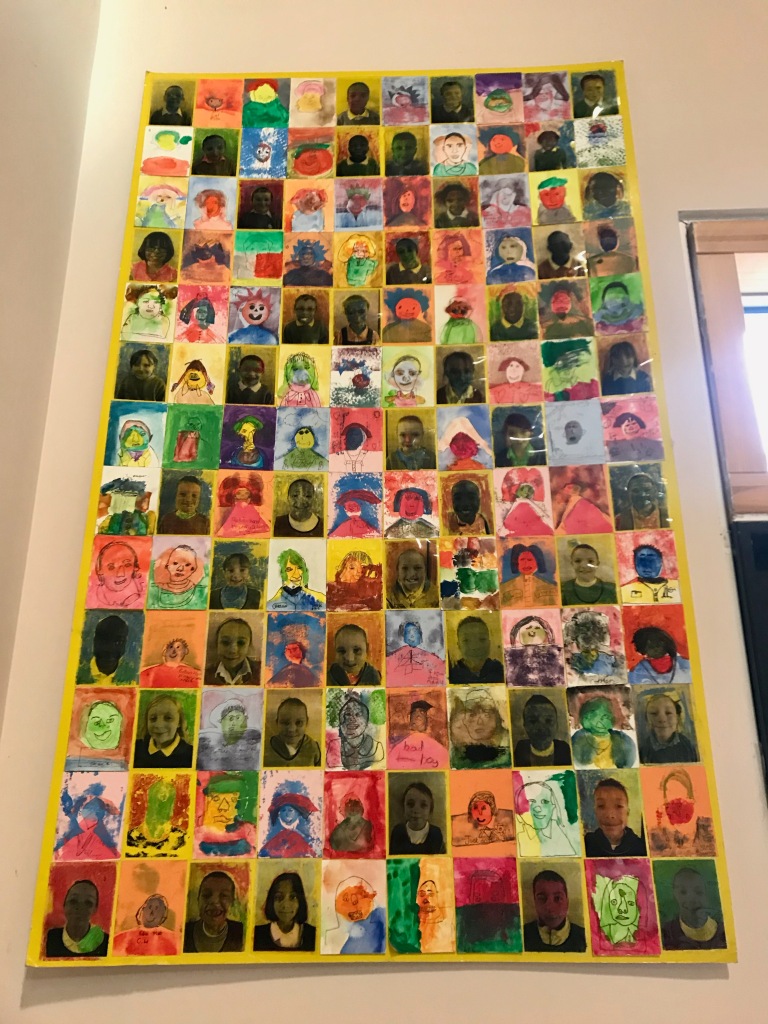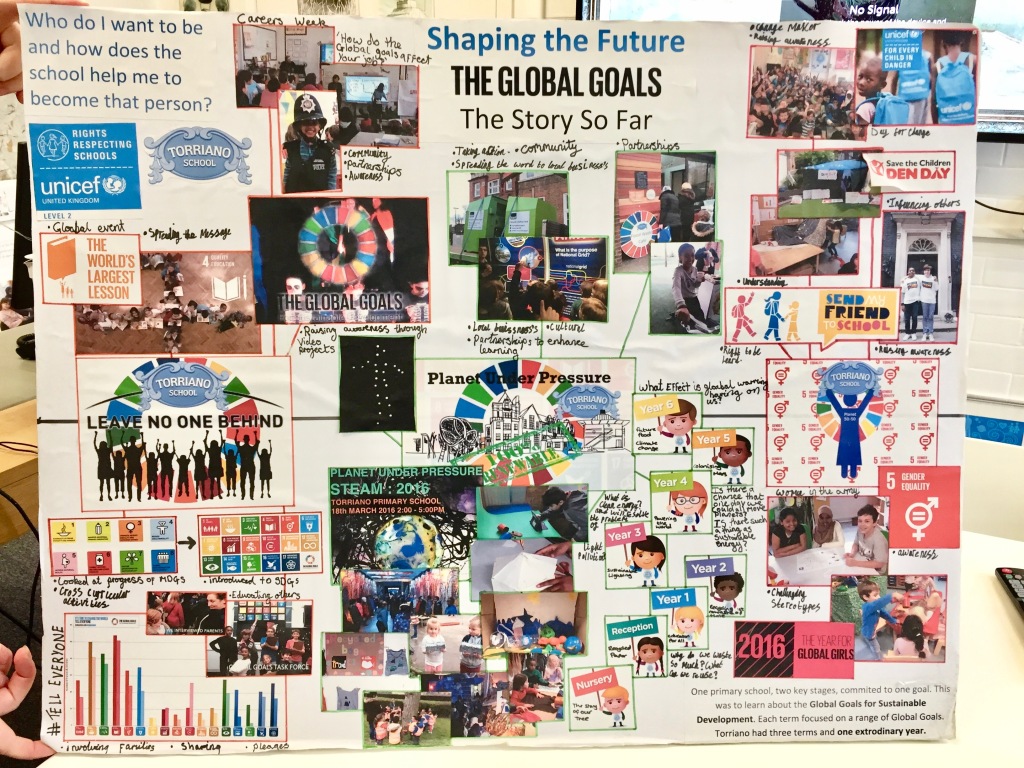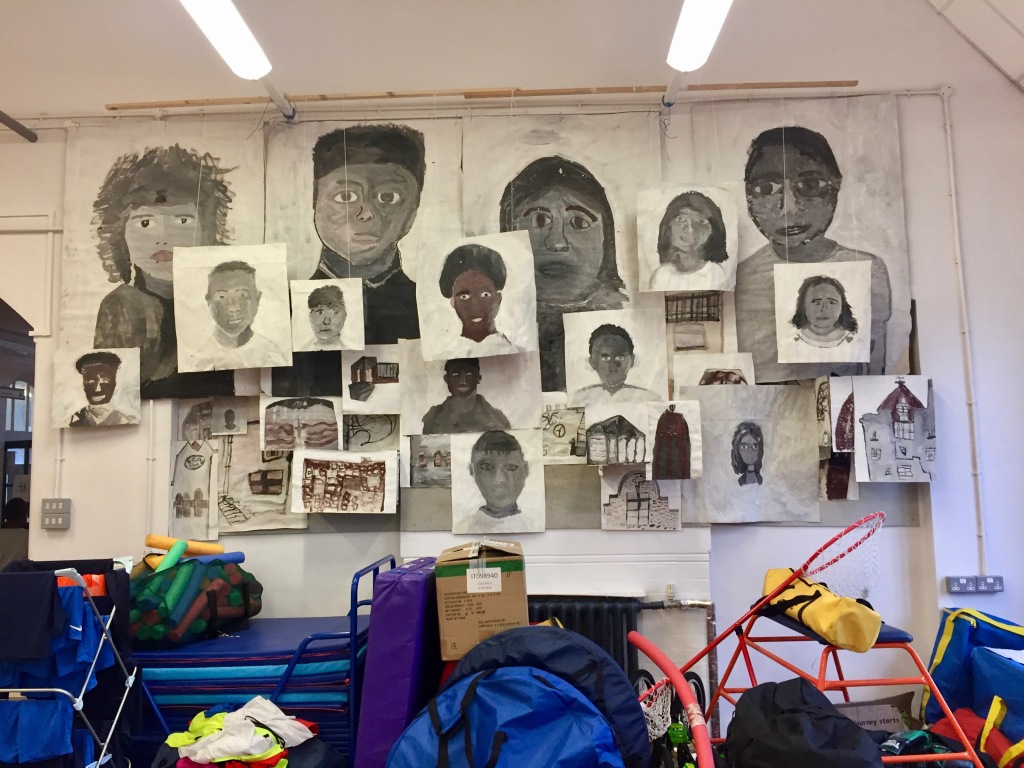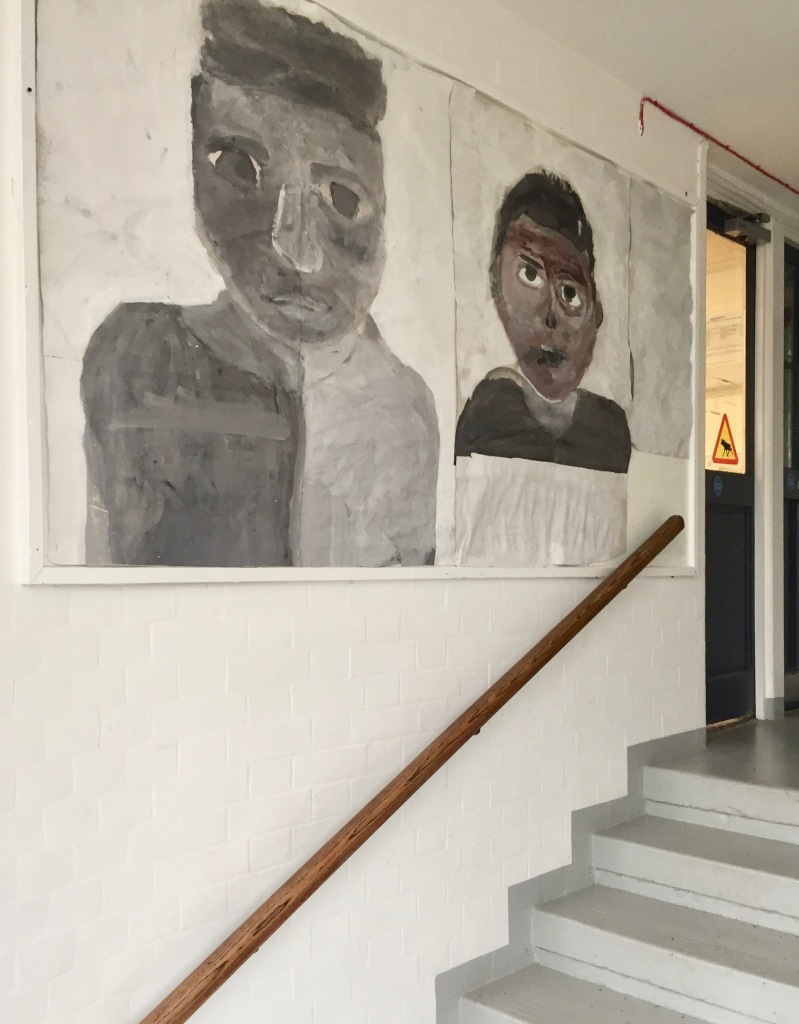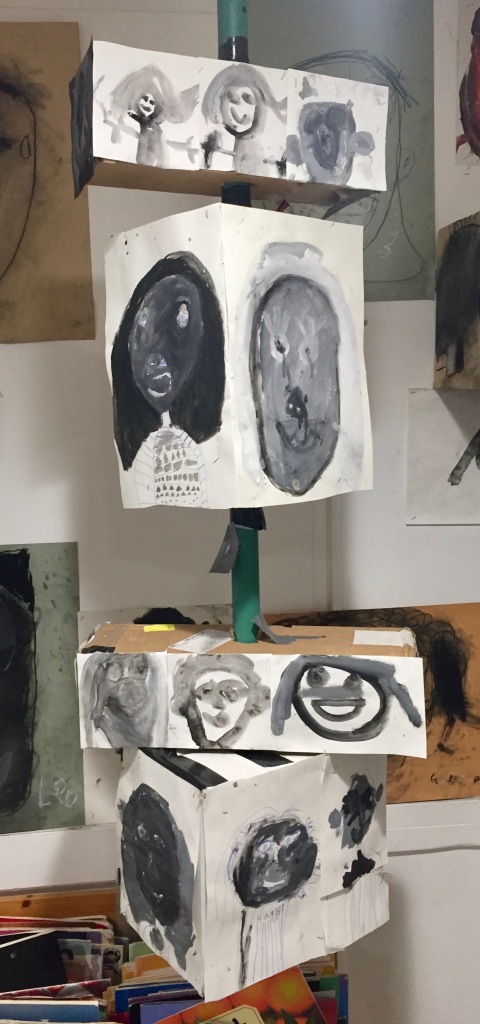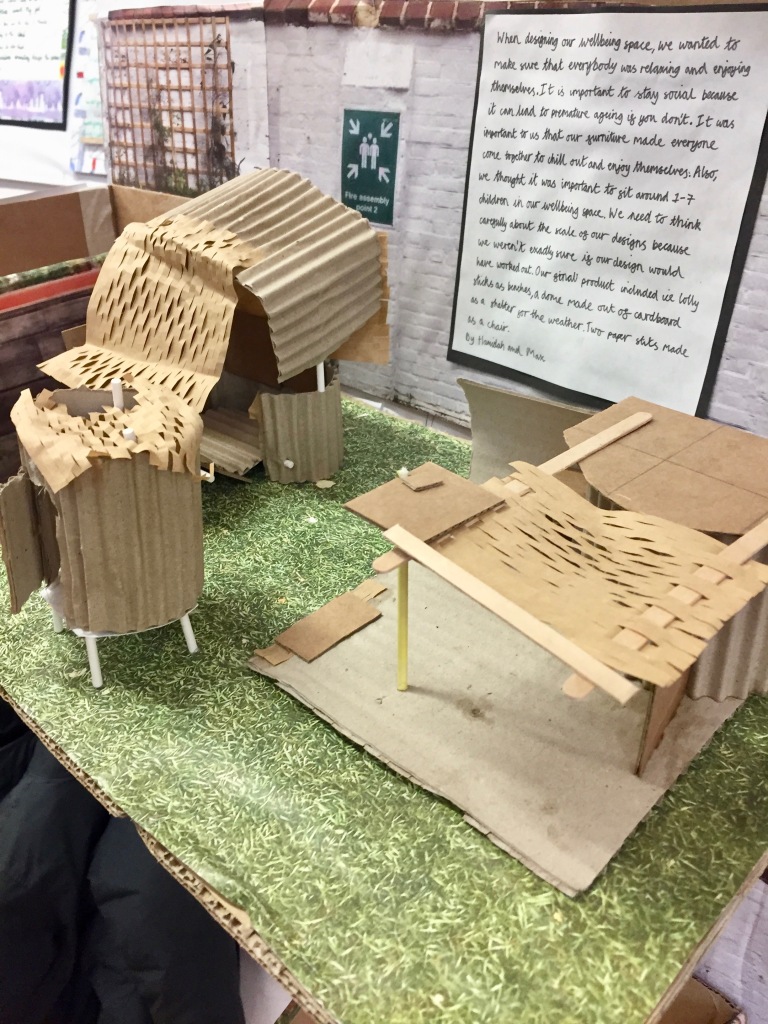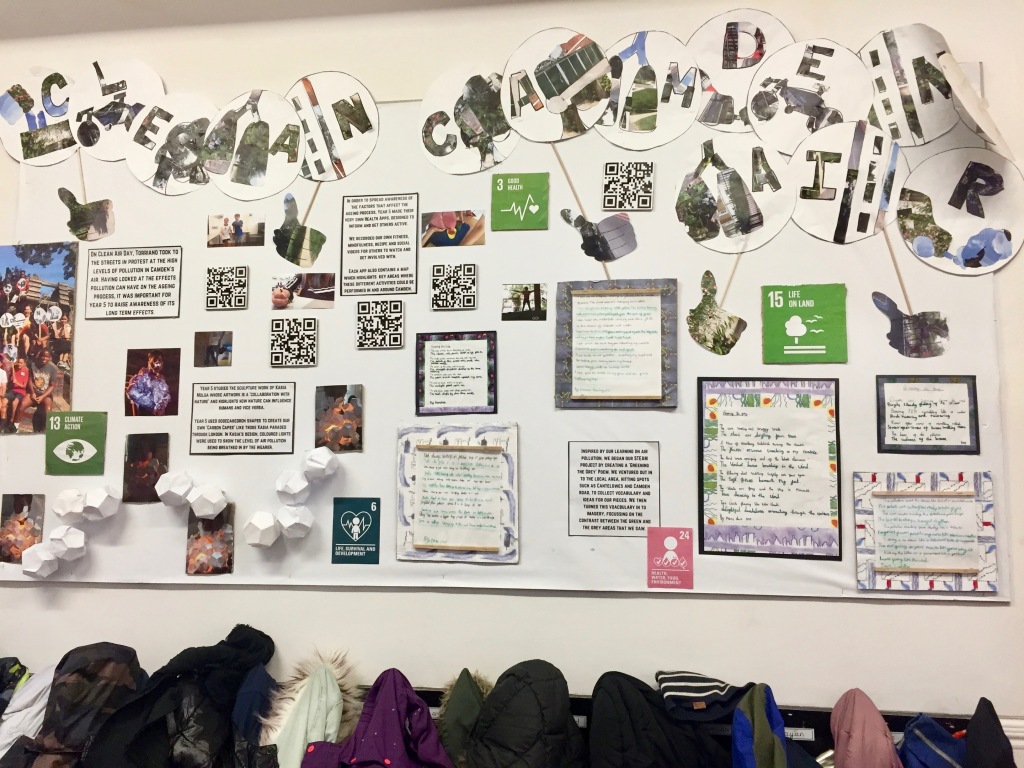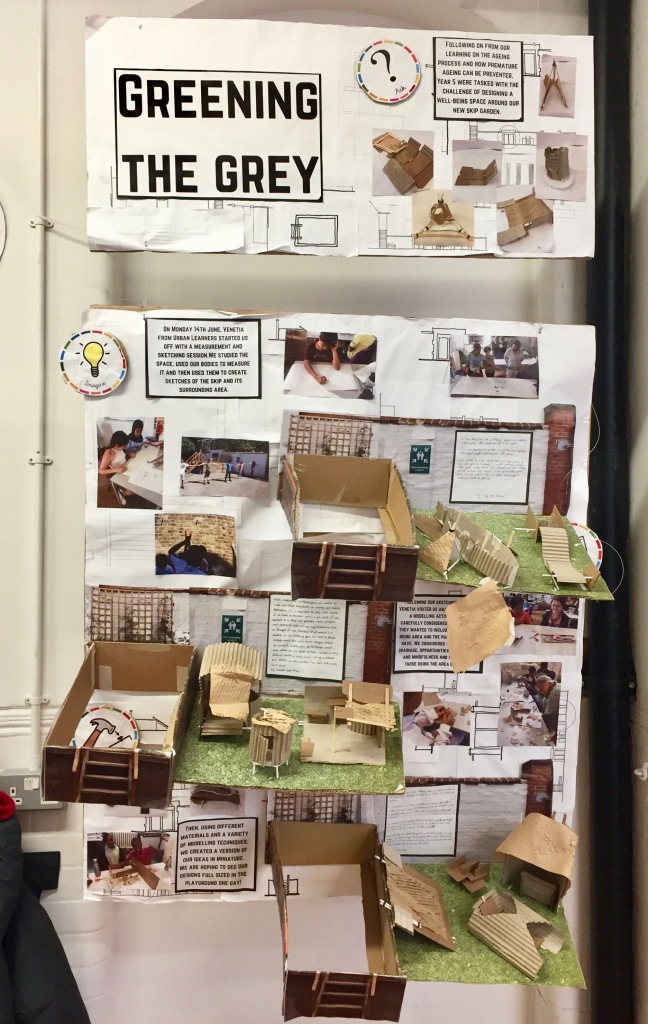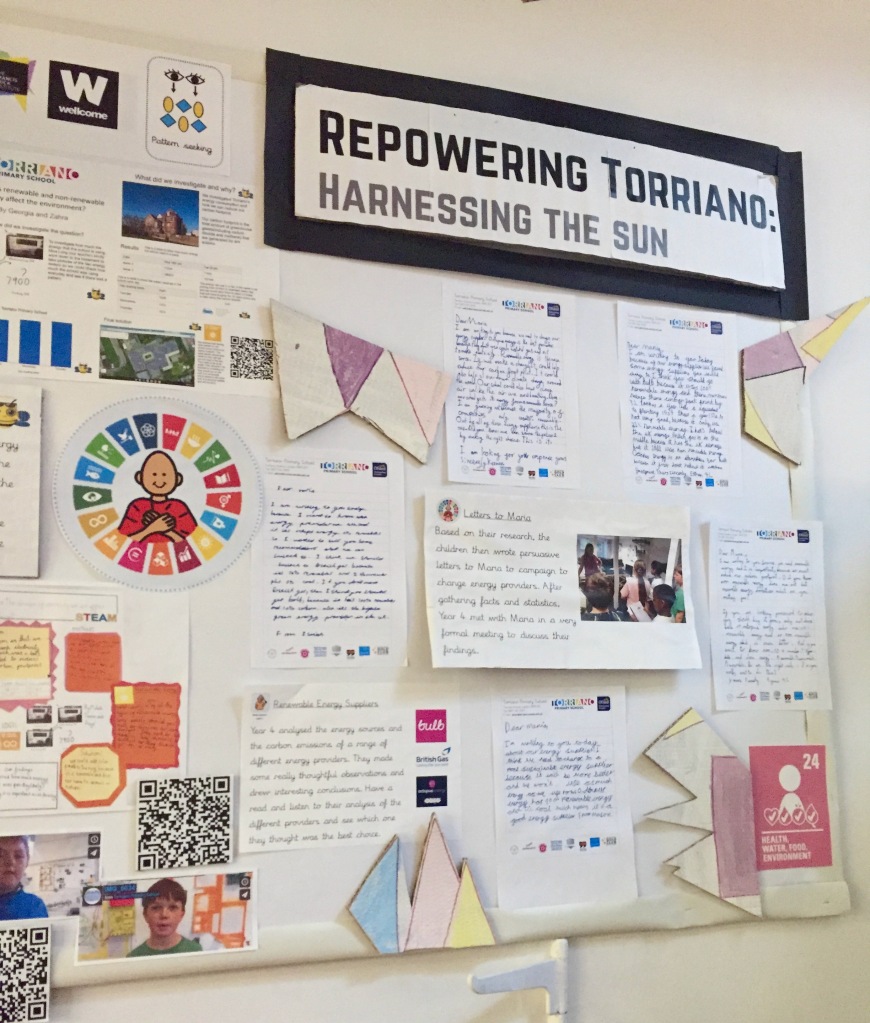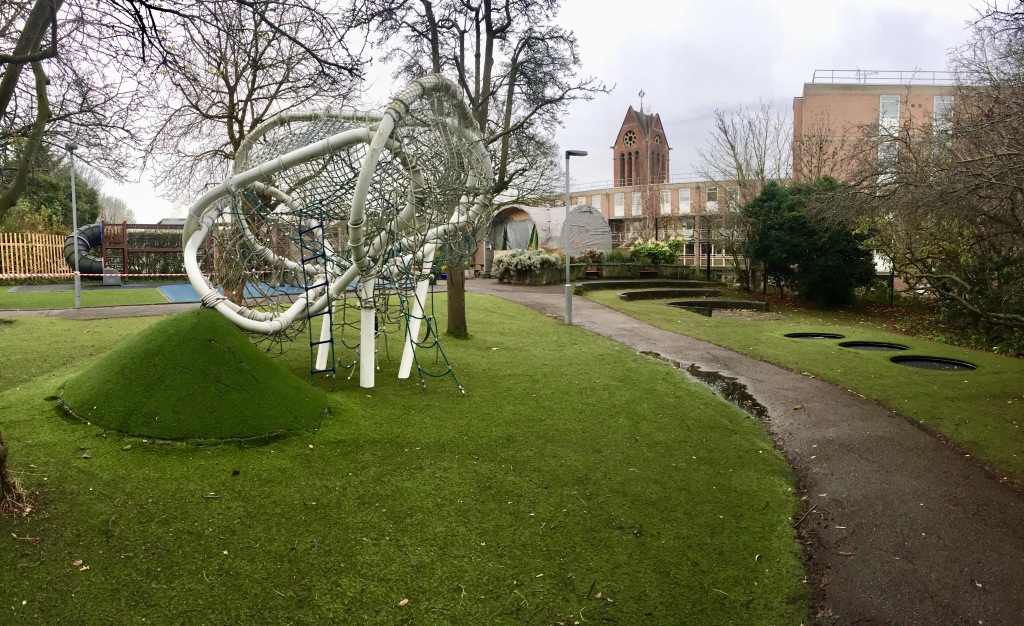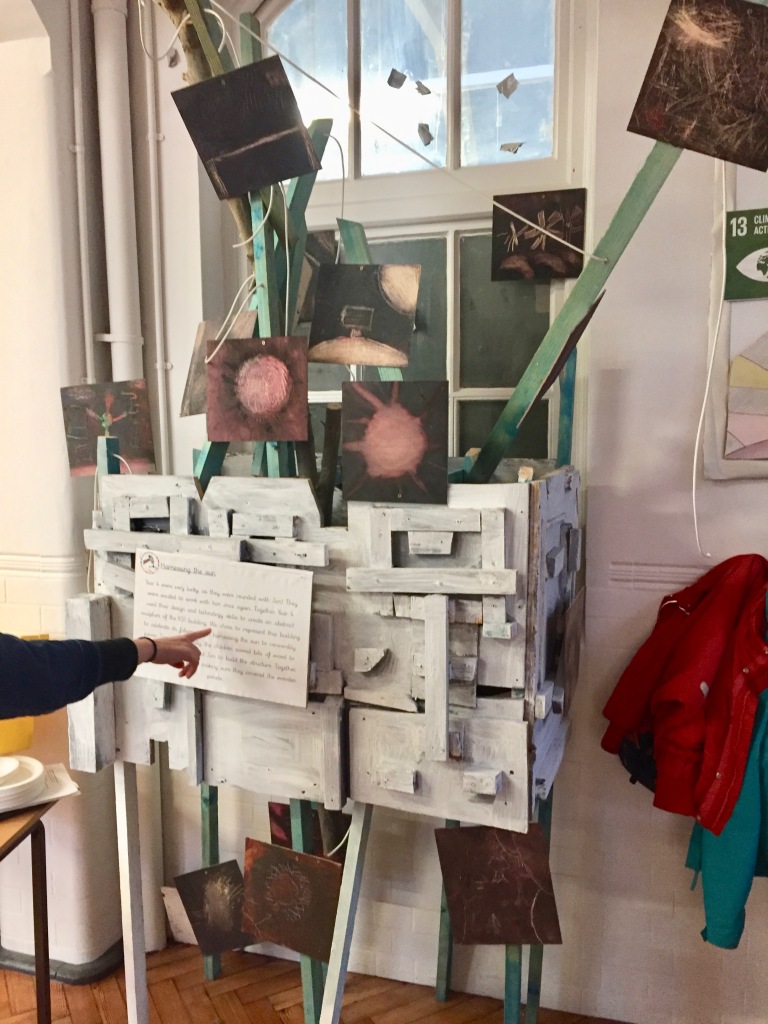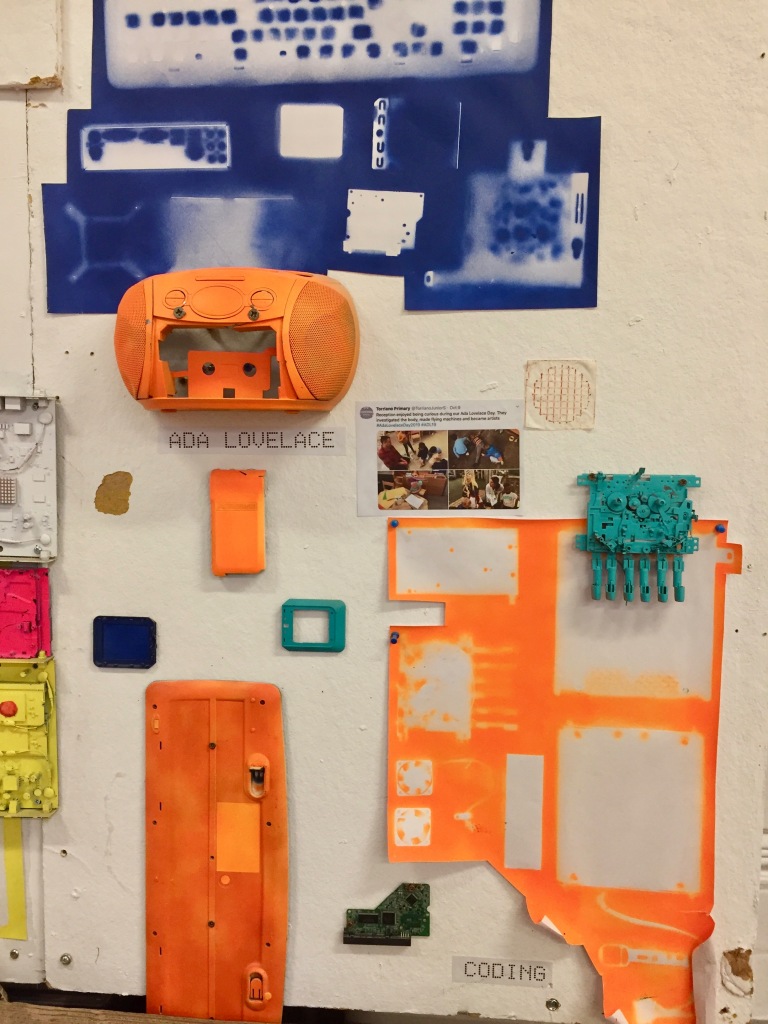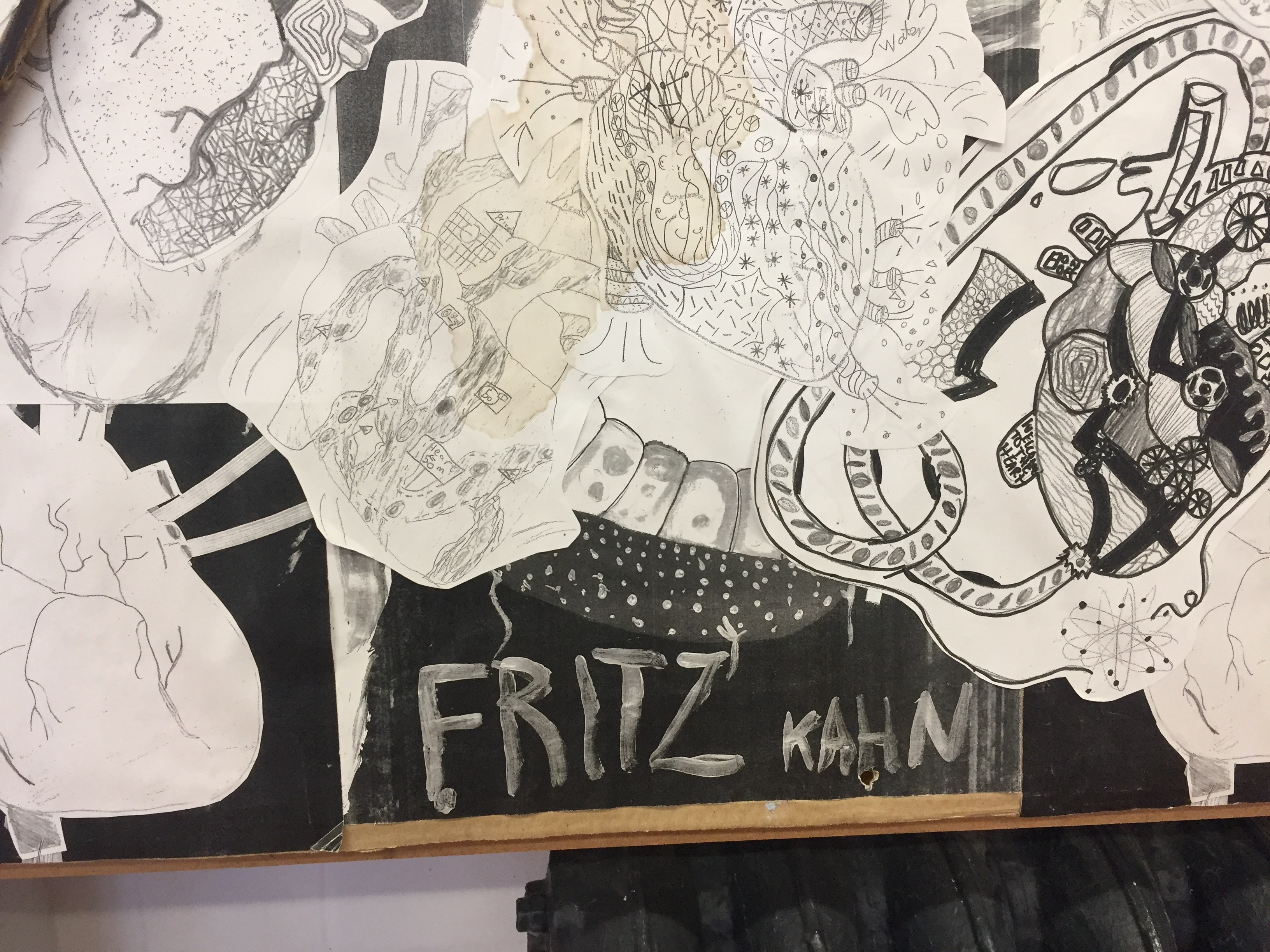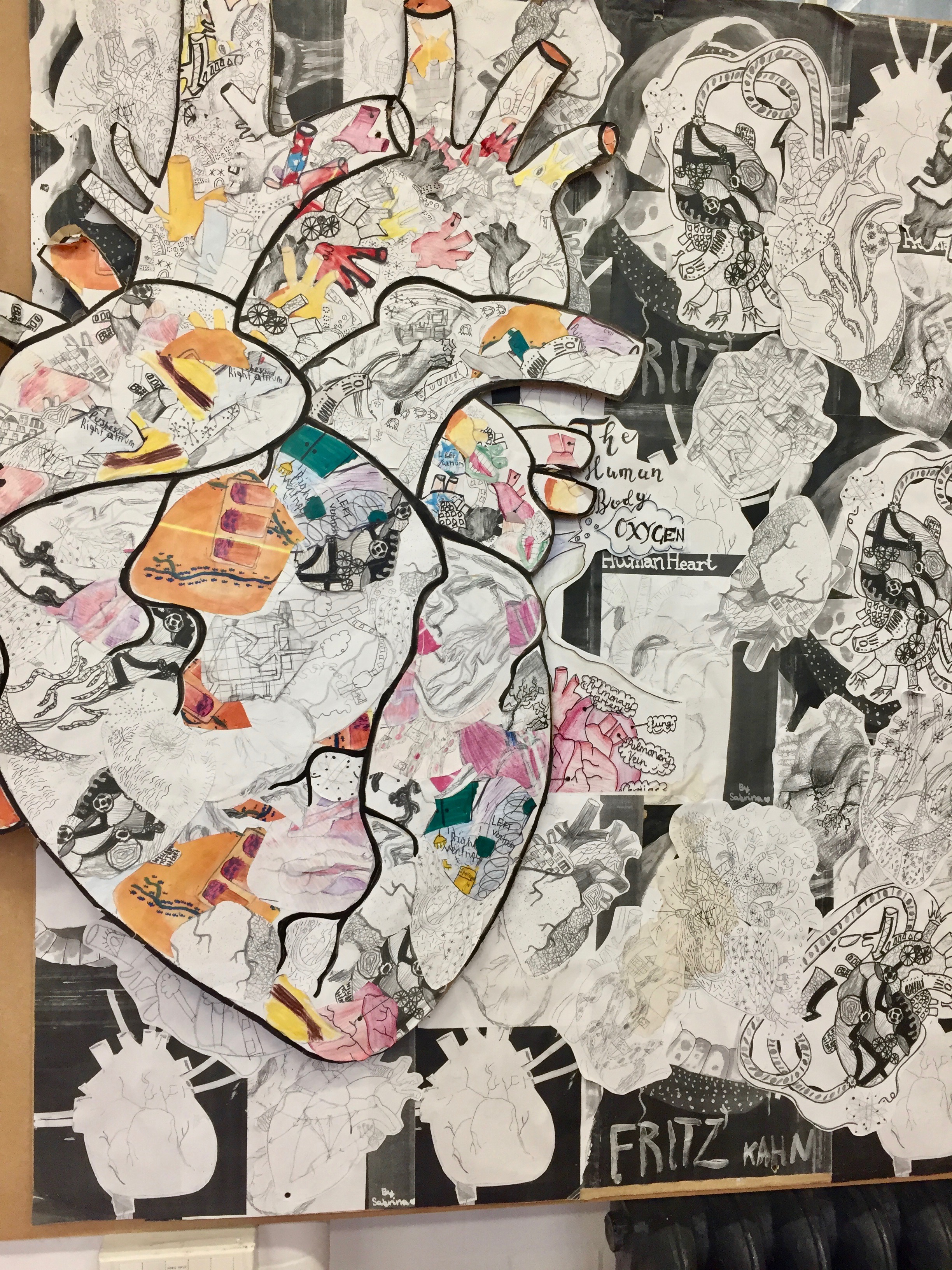
The whirling snail-shell design of the New Bewerley Community School building perfectly reflects the school’s dynamic and ever-evolving (and long-standing) arts-richness. The arial photo above also shows the sharp edge that represents the focus and purpose that drives the arts curriculum in this Beeston, south Leeds school. A side view of this innovative building would show that the wall-length windows in the classrooms let the light flood in. The school values are ‘Include. Create. Perform.’
We had the privilege of speaking with Headteacher Gary German (Art and Education degree), Arts Lead Paige Hurley (Theatre in Performance and Theatre in Education degree) and In Harmony/Opera North resident music and singing lead Elena Camblor Gonzalez. Between them we learned that, while maintaining their strong visual arts provision, the school is focussing on expanding their performing arts offer. From our focus group interviews with students, we learned all about the many creative and artistic projects taking place.
New Bewerley are one of five schools in South Leeds that are part of the In Harmony programme funded by Opera North to deliver first class music tuition to children who may not normally be able to access that type of cultural capital. They have been involved for six years. Headteacher Gary told us how the programme is not only a way to provide expert tuition for the children but also to up-skill staff. He described how ‘it took hold of the school. We have shaped our ethos and culture around it and have grown into a performance arts-focused school.’

We spoke with resident In Harmony music lead Elena about her work. Students from Years One to Six have a choir session with Elena every week. She pointed out that, with at least 50 languages being spoken at the school by students and staff from many countries, ‘singing is a great way to includes everyone and make them understand the cultures of other people, and that singing is part of their daily lives.’ We saw Elena rehearsing a group of students on a complex operatic choral piece with actions.
The rehearsal took place in the dome centre of this snail building:

We learned how students build their musicianship using the Kodály method which involves lots of singing. Years Three and Four learn stringed instruments, either the violin, viola or cello. At Year Five, they can choose to change to woodwind or brass. The big music room (‘the studio’) is full of these instruments.

The older students can take theirs home; they learn how to look after and respect their instruments. We enjoyed seeing them arriving at school with cellos on their backs! When asked about the impact of the In Harmony sessions on the parents and family members, Elena told us that:
‘Music is very powerful tool in the sense that it doesn’t only include the person who’s doing music, but it makes everyone around that person be involved and touched by music.’
As well as the substantial music provision, New Bewerley are also partnered with Northern Ballet, Leeds Playhouse and theatre company Wrongsemble.
Leeds Playhouse and theatre company Wrongsemble. The companies spot talented children and invite them to workshops at weekend in order to further develop their skills. Gary spoke about his mission to instil skills in his students that could help them go further in performing arts in their future schools, universities and careers.
Speaking from a leadership perspective, Gary pointed out that ‘if we are investing in music, drama, dance and art, then that becomes the curriculum. It’s not an add-on. It’s not something we squeeze in and drop something else. We have to make sure that those opportunities are woven into our long term and medium-term plans, that they’re done properly, and that nothing else is sacrificed at their expense.’
Arts lead Paige guided us around the school’s arts displays and spaces. We were impressed by the focus on ceramics (note the kiln below).


She guided us through the spiral curriculum where students build skills in specific media through regular revisits. For example, we learned how students make pinch pots in Year One and Two by drawing them out before adding detail with oil pastels.


In Year Three they create a watercolour wash again adding oil pastels. By Year Four they make clay Saxon cups, scratching in their designs before applying the glaze before the go in the kiln.

Year 6 students had made these multi-media final pieces, representing London during the Blitz. They used clay tiles, oil pastels and pen.
Year 5 students had created Anglo-Saxon broaches using clay slips, adding extra textures and embellishments before incorporating textiles in the form of weaving and sewing.


Students have also made these clay Remembrance Day poppies:


Year 3 had worked with artists Skippko on a six-week series of ceramic and multi-media Science-themed projects. Entitled ‘How does your garden grow?’, the work incorporated photography, flowers imprinted into clay, and creating and decorating clay pots with images of still life plants.

The school were also partnered with The Tetley Contemporary Art gallery in Leeds for which New Bewerley were a flagship school. Through The Tetley, Year Four had been investigating Ghanaian art, language and symbols.
The students’ sketchbooks were full of vibrant drawings and paintings, including these artworks produced after studying Jean-Michel Basquiat during Black History Month. In these activities, the students have used their reading skills of retrieval, interpretation and commenting on the creator’s choice to understand a variety of media.




New Bewerley are working towards their Cultural Cohesion Quality Mark:

Students had created art and creating writing on the subject of inclusion with reference to murdered local MP Jo Cox:



Finally, Paige had recently created an arts ‘dictionary’ so that teachers and children can look up an arts-based word with which they are unfamiliar. Not only does it give students the vocabulary for critically engaging with the paintings, sculptures and other artworks, but it contains knowledge about art forms, artists and key ideas.
‘There is a clear journey to success that the arts-based curriculum takes us on’, Paige told us.
Many thanks to the students of New Bewerley and to Headteacher Gary German, Arts Lead Paige Hurley and In Harmony/Opera North resident music lead Elena for speaking with us.


You may also be interested in reading our recently-published Art, Craft and Design Rapid Evidence Review – a survey of published scholarly literature on art, craft and design in education.







